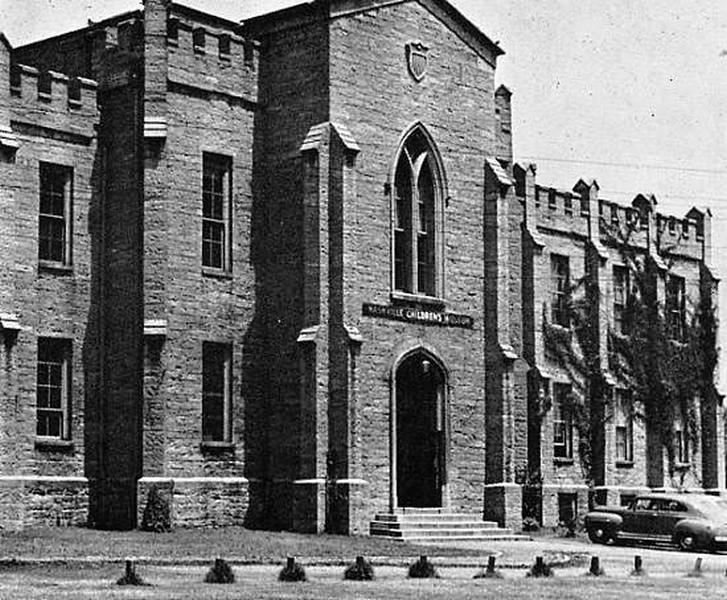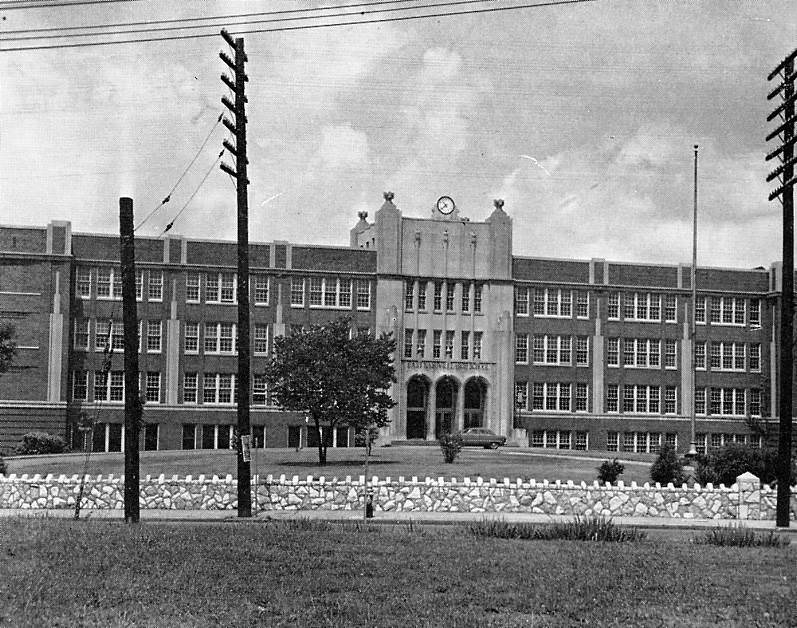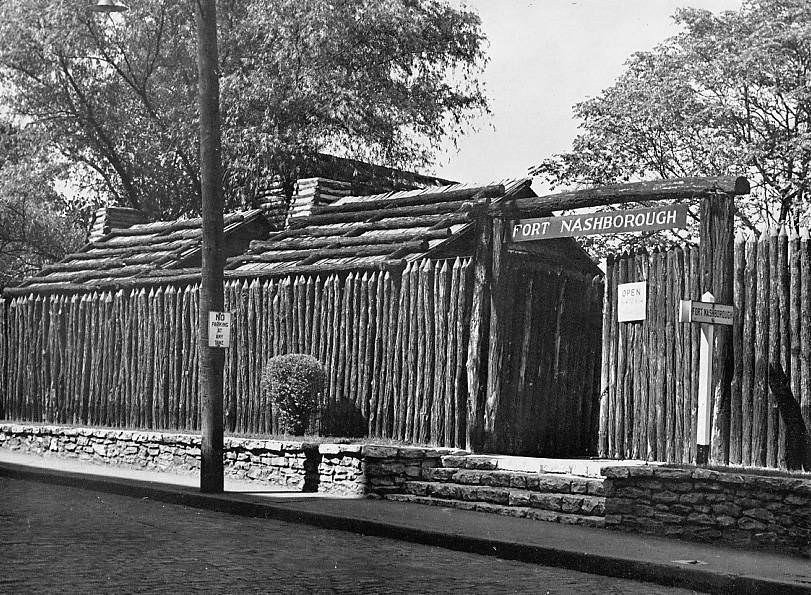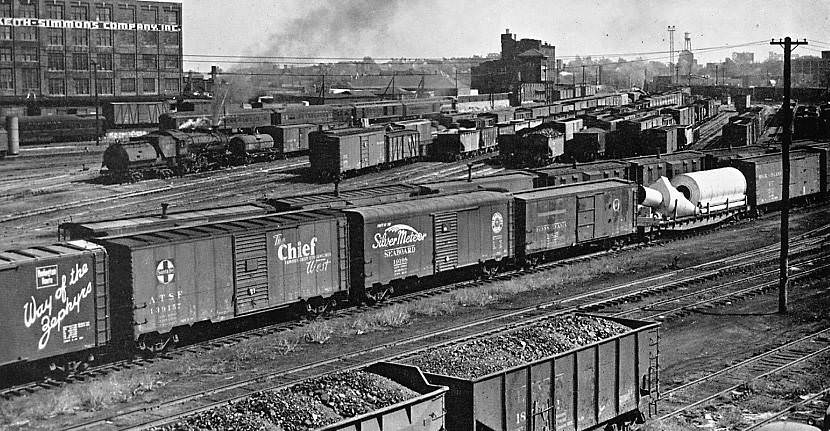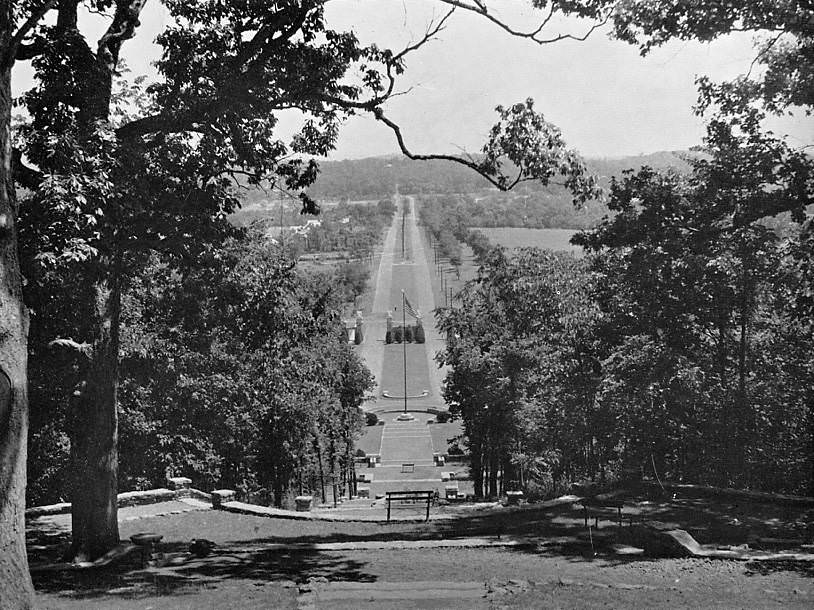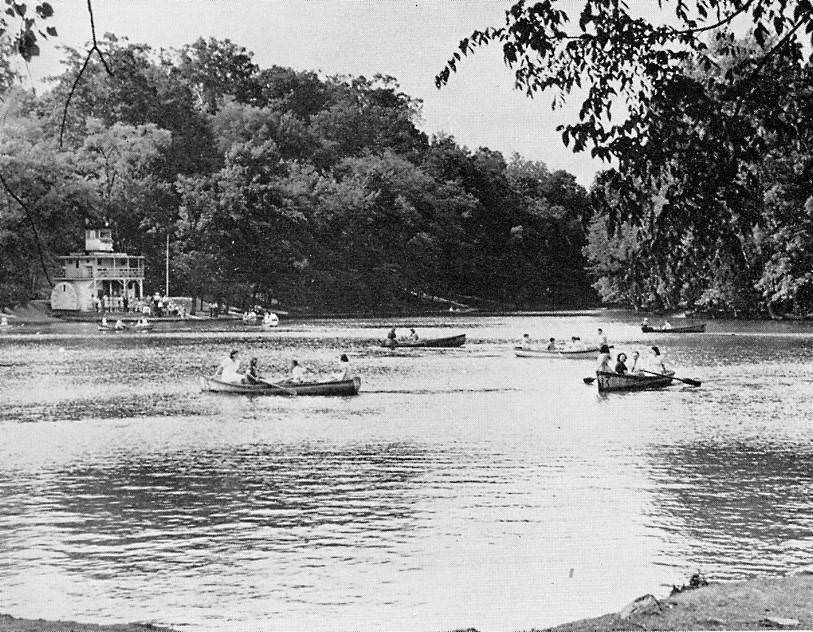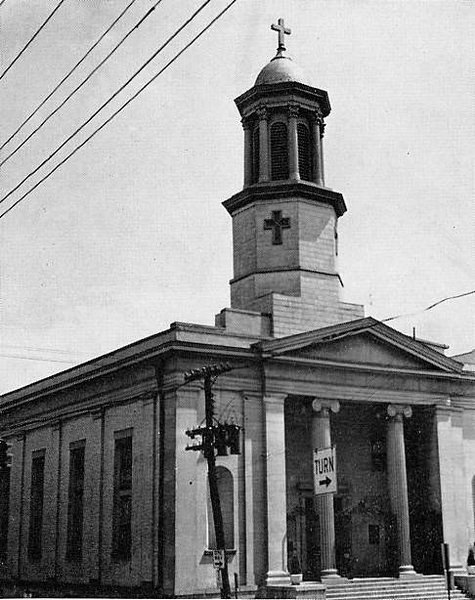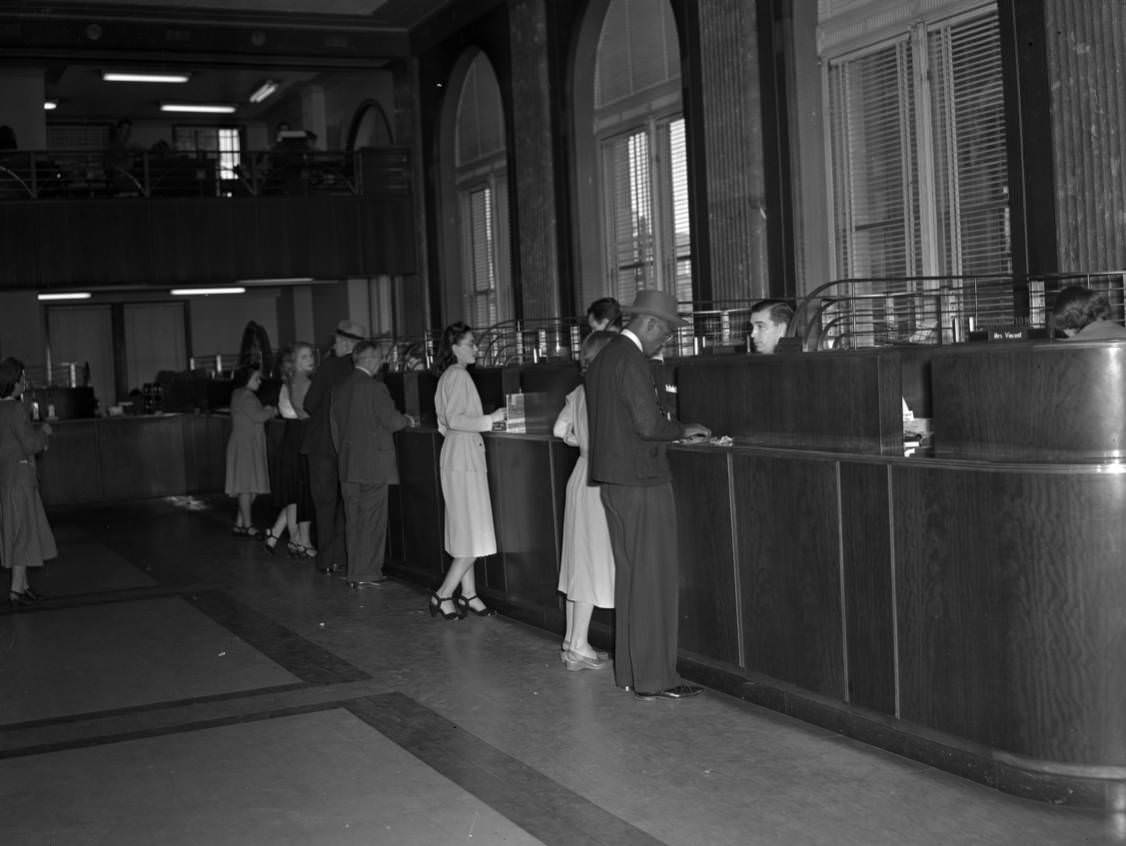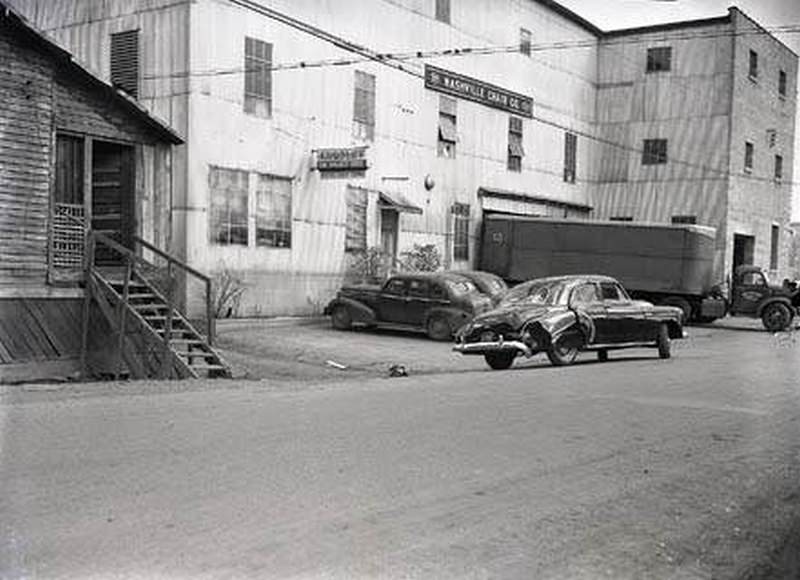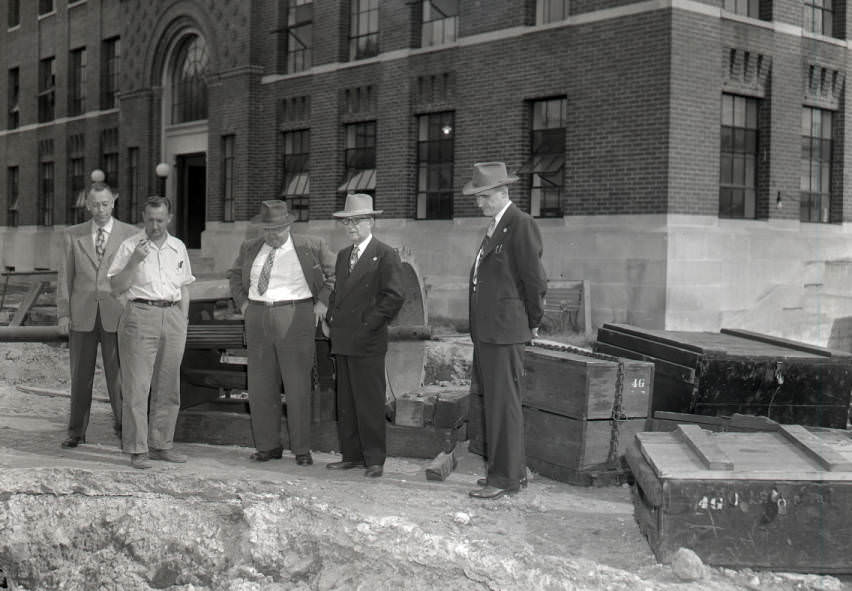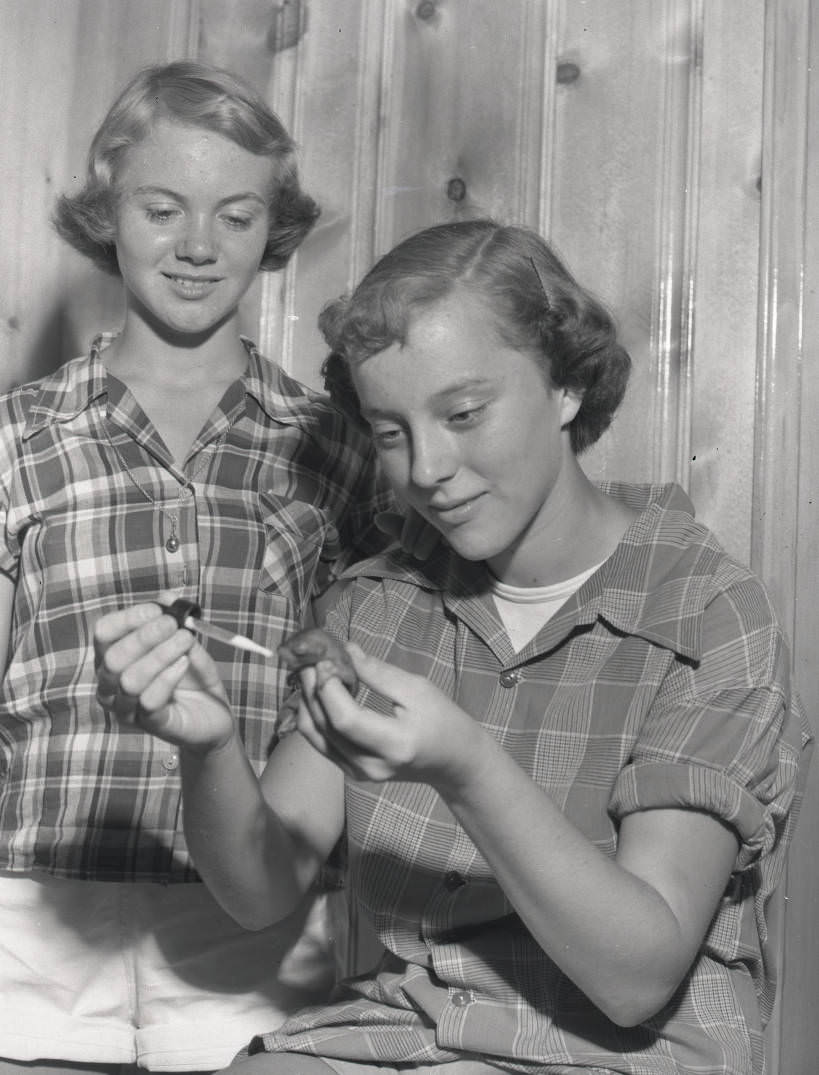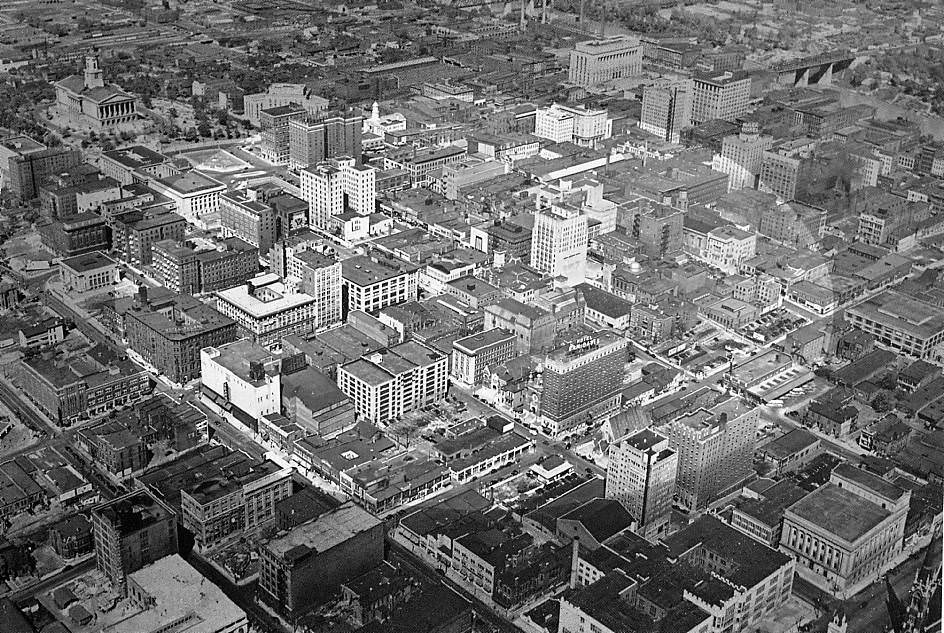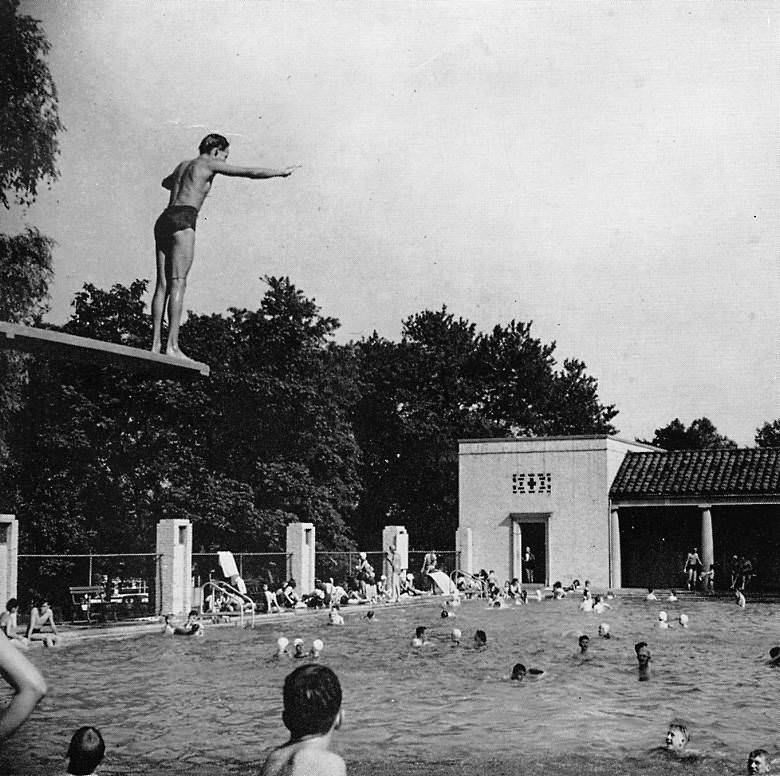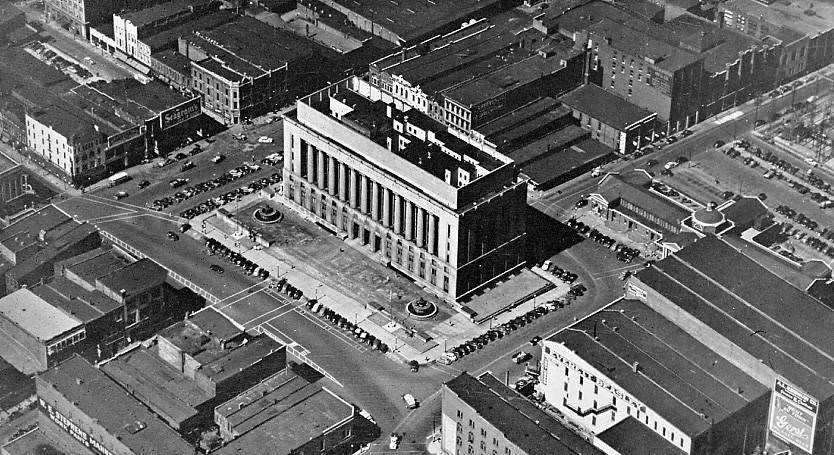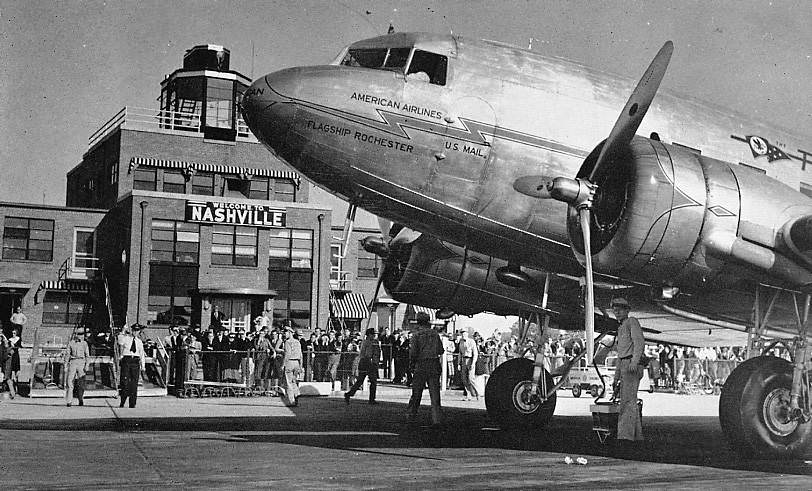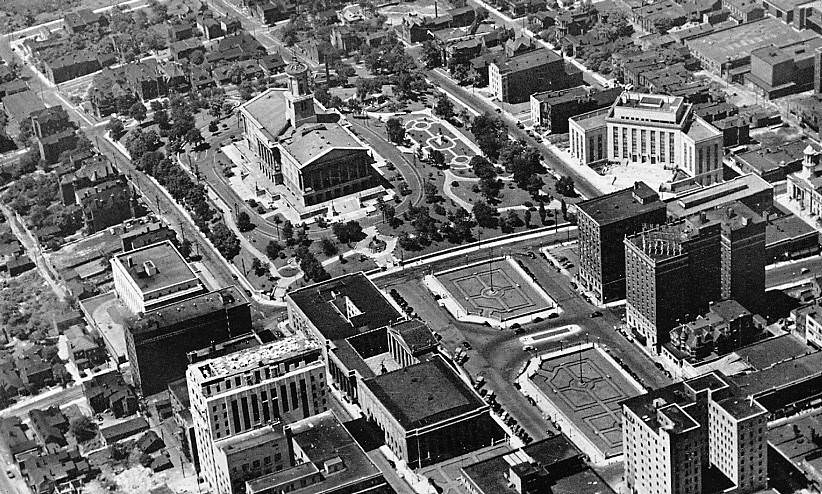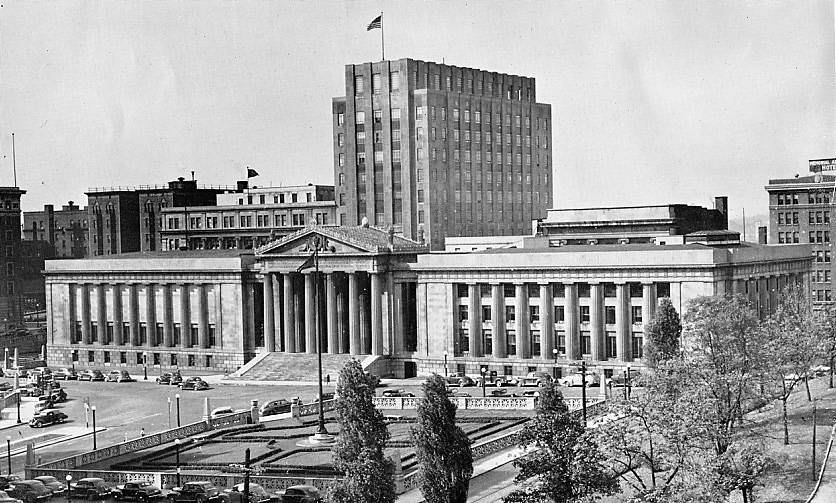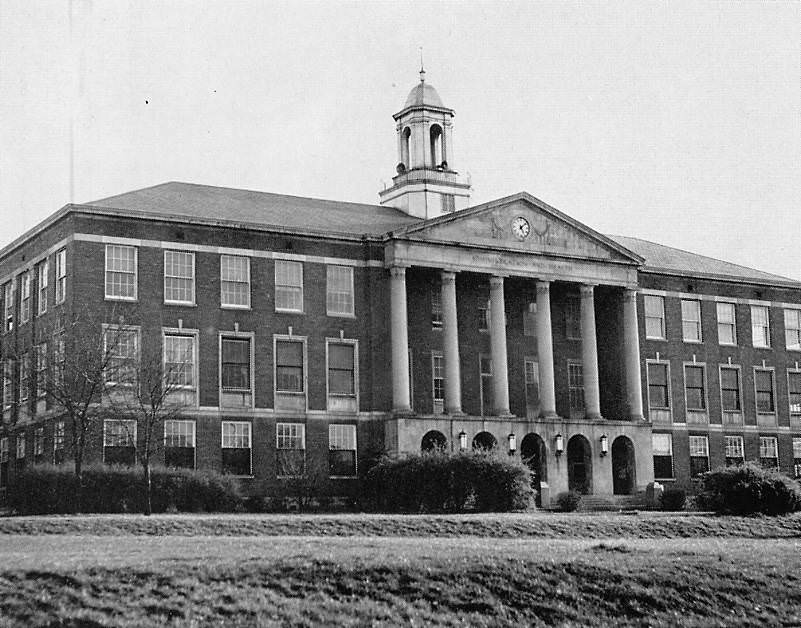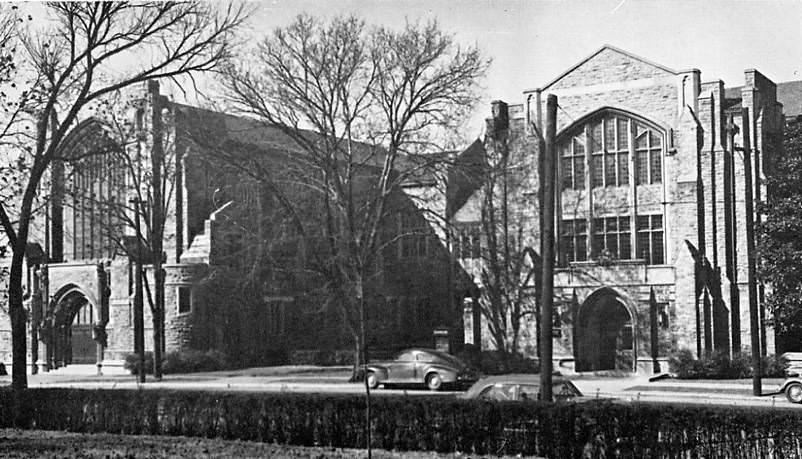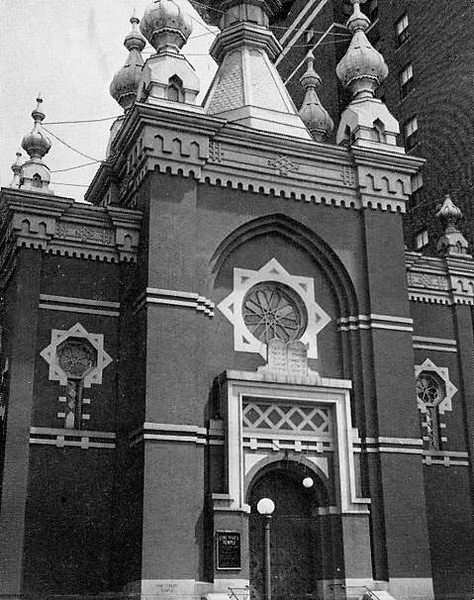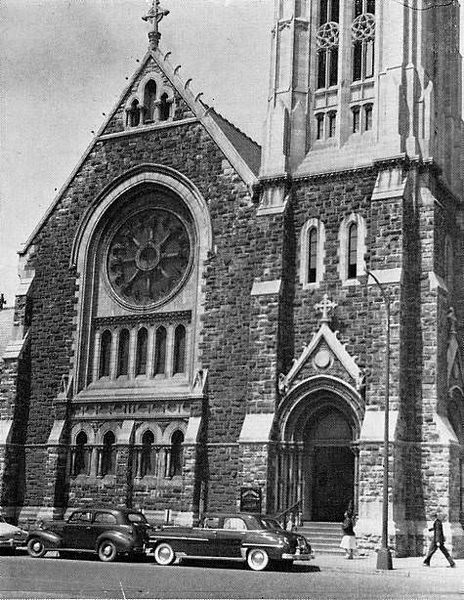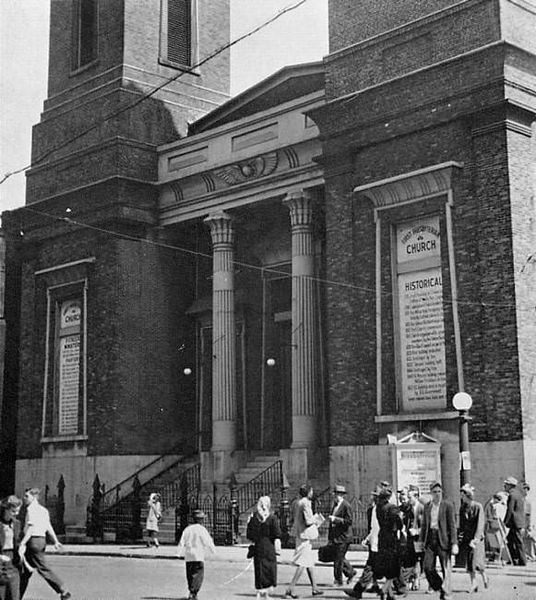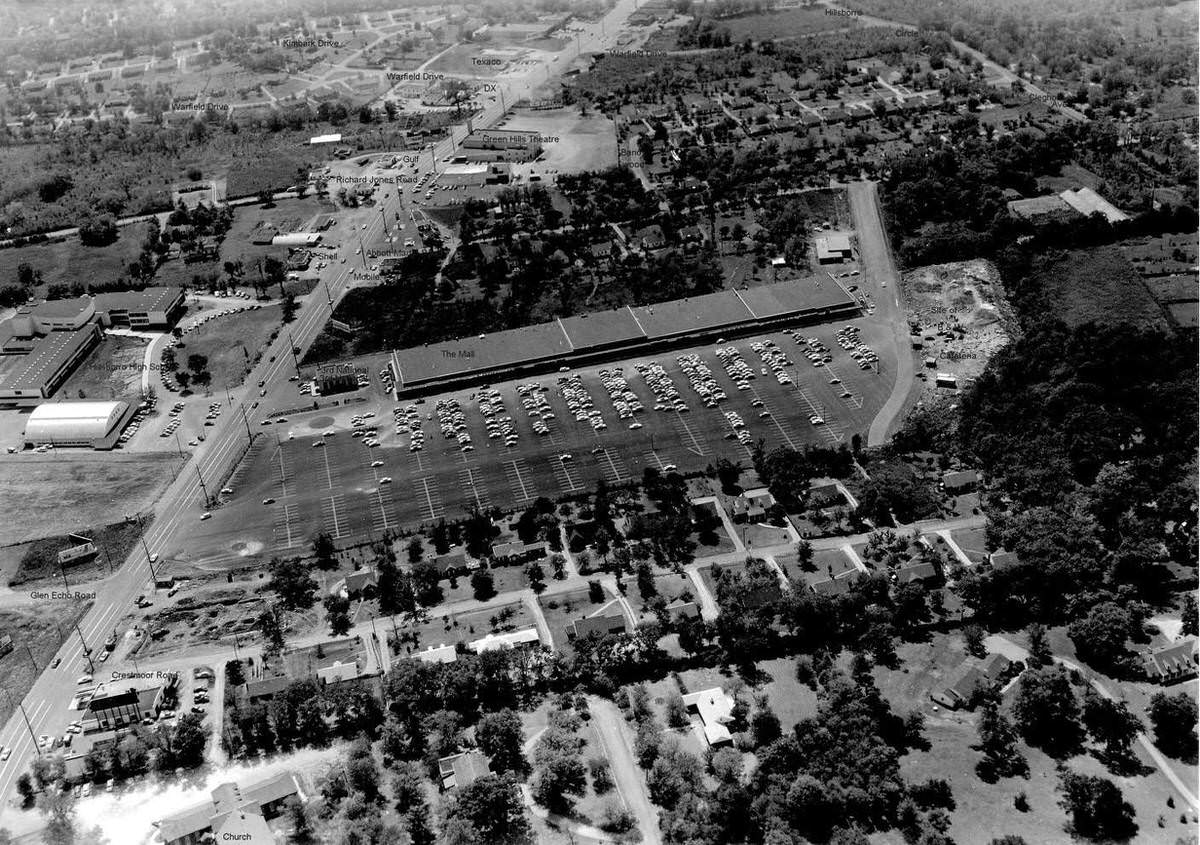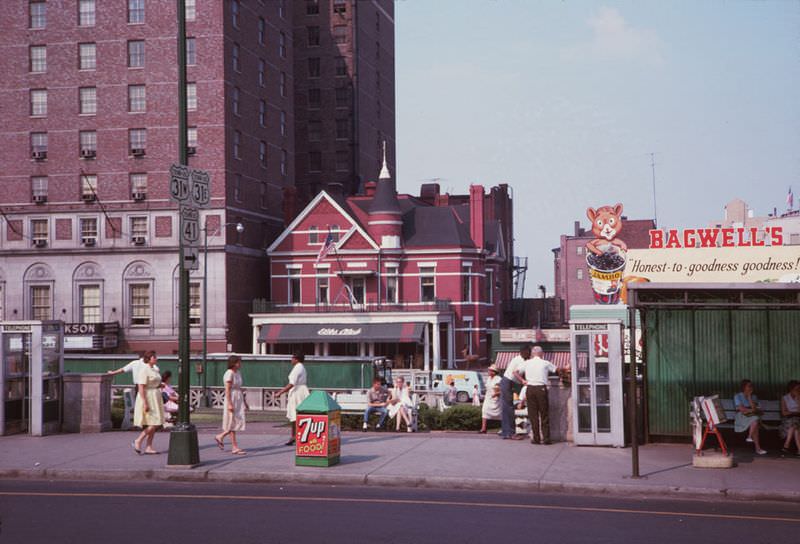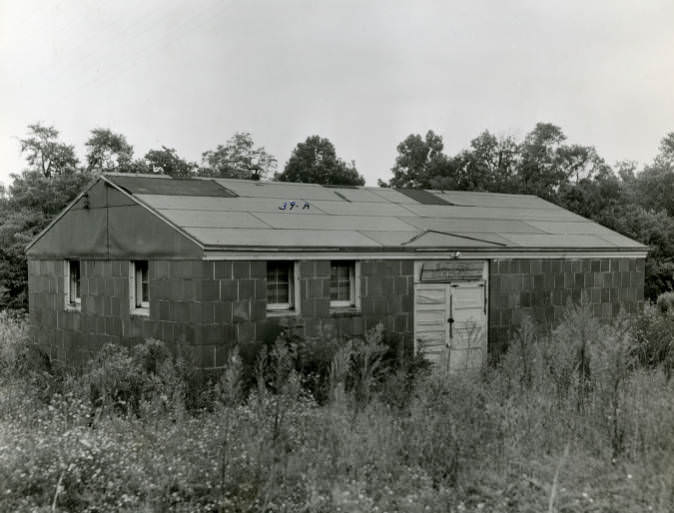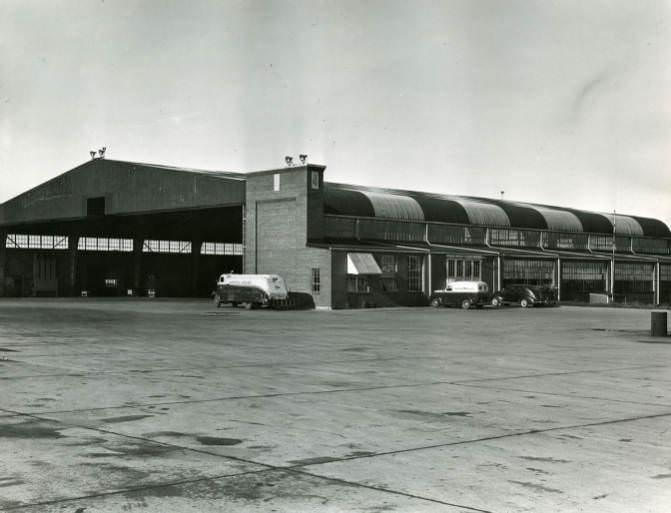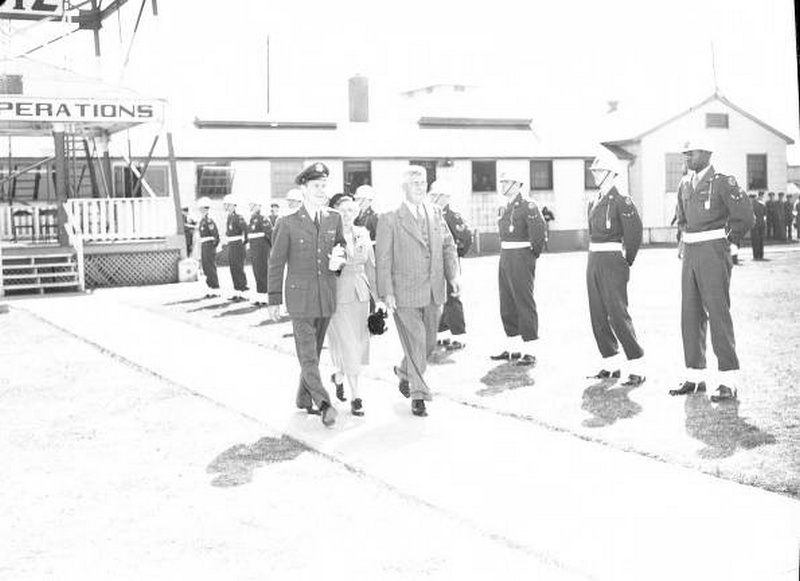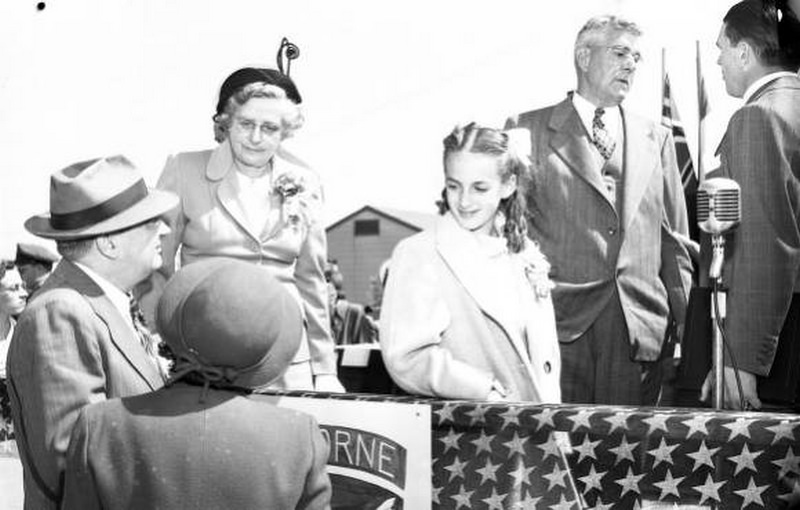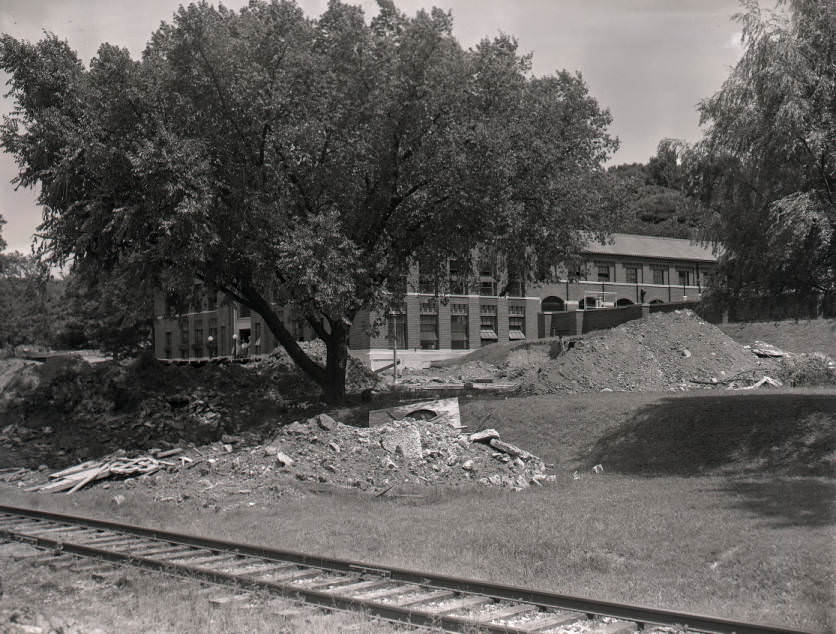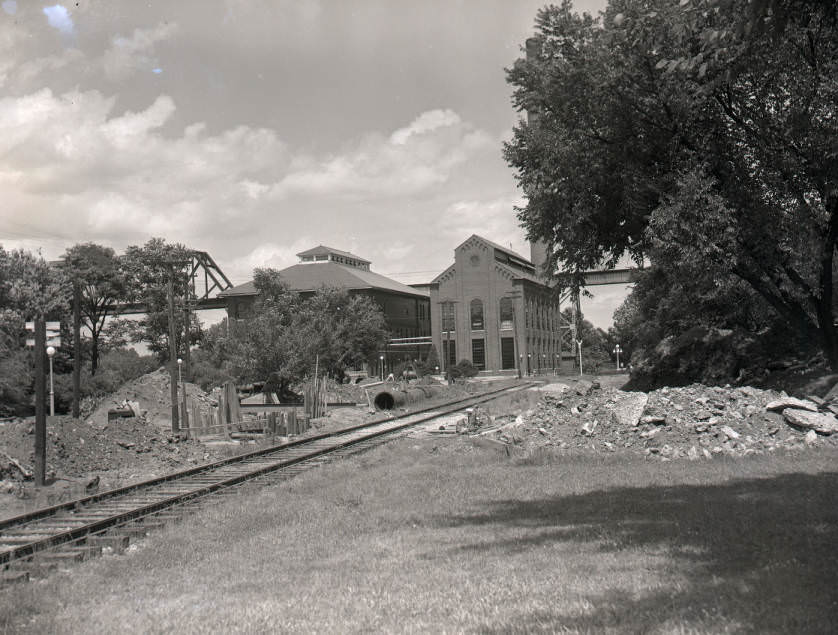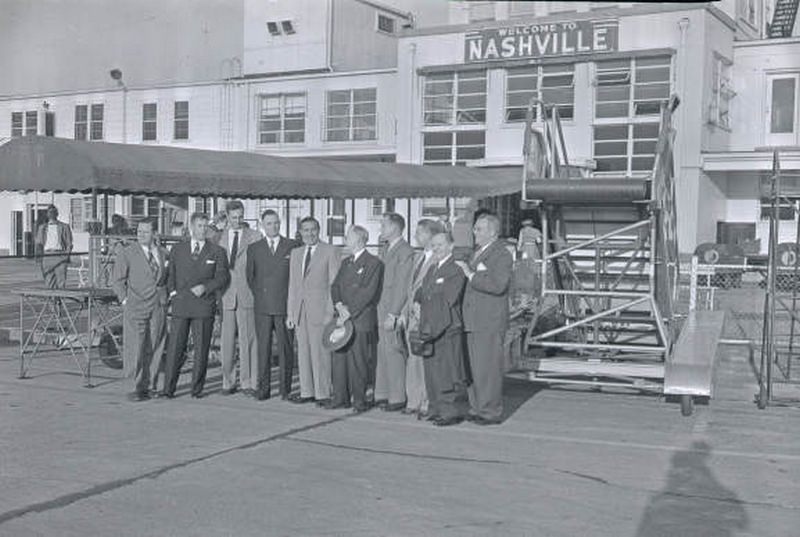We remember the 1950s with a sense of nostalgia; color photography was beginning to take hold at the time, so even relics from that era are nostalgic. Life was slower before the Internet and cell phones. Perhaps things looked better in black and white. There was no internet, and people had to go all the way to the library to spend a couple of hours looking for the answers and knowledge.
Looking back at Nashville’s history can be fascinating, and we can visualize what the life of the city was like back then. Check out these stunning historical photos from 1950 to see just how spectacularly Nashville has transformed.
#1 Nashville Children’s Museum, 1950
#2 Nashville East High, 1950
#3 Fort Nashborough, 1950
#4 Railroad Gulch, 1950
#5 Percy Warner Park Steps, 1950
#6 Shelby Park Lake, 1950
#7 St. Marys, 1950
#8 Davidson County Courthouse, Nashville, Tennessee, 1950
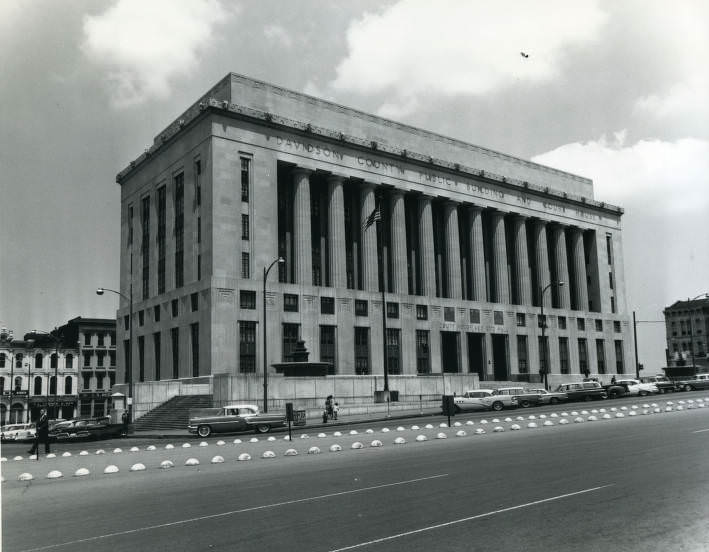
The Davidson County Courthouse, also known as Metropolitan Courthouse, is an Art Deco building built in 1936. It was listed on the National Register of Historic Places in 1987. It was designed by Nashville architect Emmons H. Woolwine and the firm of Dennison and Hirons of New York.
#9 Put a candle in the window” as sung by the Christ the King’s Boys’ Choir, 1950
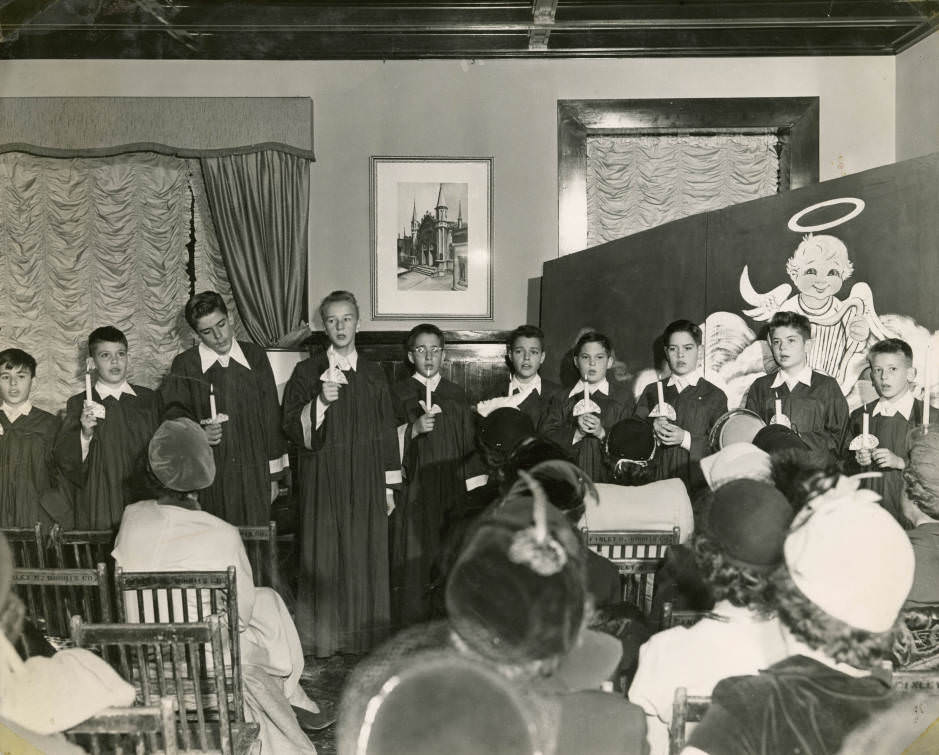
From left to right, the singers are: Robert Kirchner, Joe Patrick, Danny Badacour, Johnny Lawrence, William Morrison, Billy Boyd, Charles York, George Patrick, Shelton Johnson and Paul St. Charles.
This photograph illustrated the newspaper article "Betty Banner Heeds Bid to Fannie Battle Holiday Tea," published in the 5 December 1950 issue of the Nashville Banner.
#10 Hooberry’s Book Store, Country Kitchen and Clifton Apartments, Nashville, Tennessee, 1950
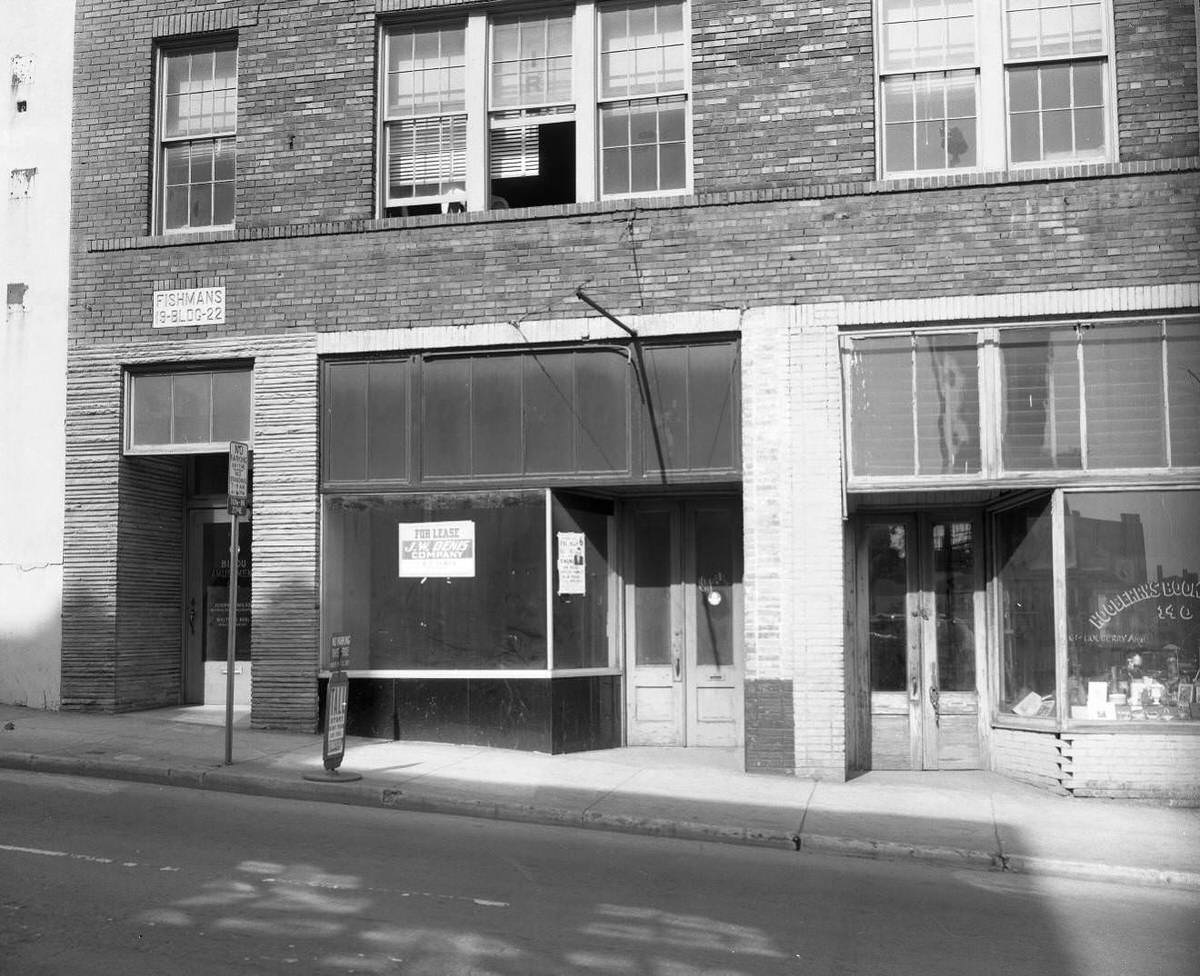
Two photographs showing an apartment building above the Hooberry’s Book Store at 140 Fifth Avenue N in downtown Nashville, Tennessee, with the Country Kitchen restaurant, and some vacant spaces. The 1949 City Directory cites the Clifton Apartments at 140 Fifth Avenue N, and a restaurant owned or managed by Solon L. Boyd, though not identified specifically as “Country Kitchen.”
The 1950 and 1957 City Directories list the Hooberry’s Book Store at 140 Fifth Avenue N. A poster advertising an upcoming music at the Ryman Auditorium featuring the gospel singing groups Oak Ridge, Speer Family and others on the Friday May 7th performance date.
#11 Interior of Commerce Union Bank, Nashville, Tennessee, 1950
#12 Nashville Business – The Nashville Chair Company, 1950
#13 Downtown Nashville skyline, facing northwest, 1950
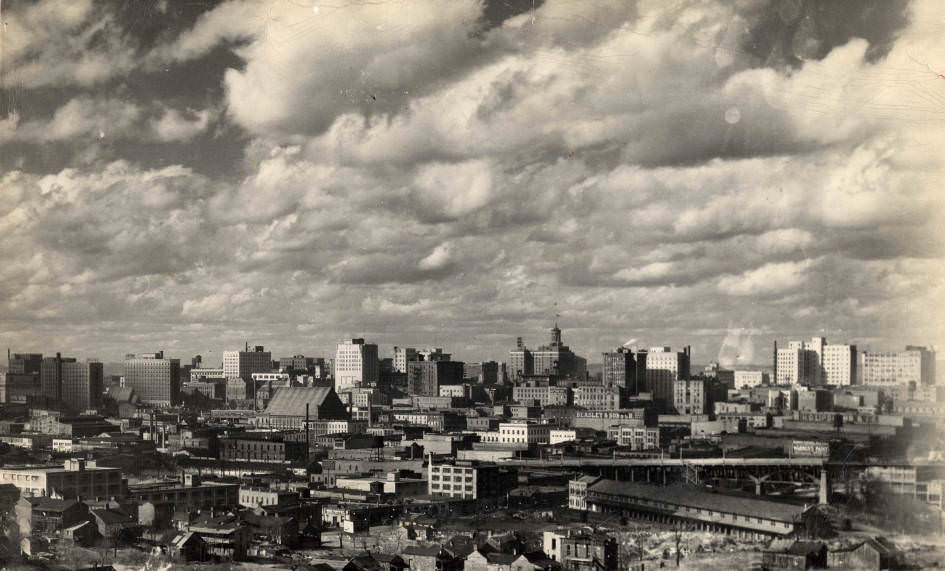
Several buildings and landmarks are visible in this photograph, such as the Tennessee State Capitol, Bennie Dillon Building (702 Church Street), Warner Building (later named the Sudekum Building, located at 535 Church Street), First Presbyterian Church (later named the Downtown Presbyterian Church, located at 154 Fifth Avenue North), Ryman Auditorium (116 Fifth Avenue North), Sanders Manufacturing Company (124 Fourth Avenue South), Beasley & Sons (147-151 Third Avenue North), and H. G. Lipscomb & Company (138-142 Second Avenue North).
#14 War Memorial Building, Nashville, Tennessee, 1950
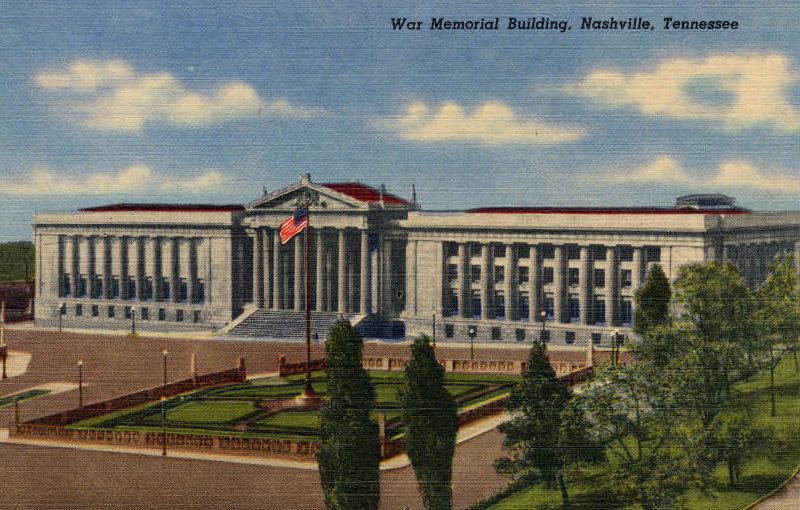
A postcard of the War Memorial Building on Memorial Plaza stretching between Union Street and Charlotte Avenue, and from Sixth to Seventh Avenues.
This building was built by the state, county and city in 1925 to honor the Tennesseans who served in World War I. Since then, the memorial has come to commemorate those Tennesseans who fought in all wars. The architect and designer for this project was Nashville architect Edward Dougherty, affiliated as an associate with McKim, Mead, and White of New York on the design.
The granite and marble building in Greek Doric style has a large open memorial courtyard that contains a massive sculpture created by Belle Kinney and Leopold Scholz. Two wings extend from the open court housing government offices, a 2,200 seat auditorium and the Tennessee State Museum's military collection.
Also by Kinney is a large sculpture honoring Tennessee women during the Civil War. In 1985 a memorial to Tennessee's Vietnam veterans was added.
#15 Water Department and the George Reyer Pumping Station, Nashville, 1950
#16 Two young women feeding a baby animal, 1950
#17 Nashville Downtown, 1950
#18 Centennial Park Pool, 1950
#19 Nashville Court House, 1950
#20 Nashville Airport, 1950
#21 Tennessee State Capitol, 1950
#22 War Memorial Building, 1950
#23 Nashville, 1950
#24 West End United Methodist Church, 1950
#25 Vine Street Temple, 1950
#26 Christ Church Episcopal, 1950
#27 First Presbyterian, 1950
#28 Green Hills around, 1950
#29 Elks Lodge Downtown, 1950
#30 Aviation salvage warehouse at Berry Field, Nashville, Tennessee, 1950
#31 Berry Field Fire Hall, 1950
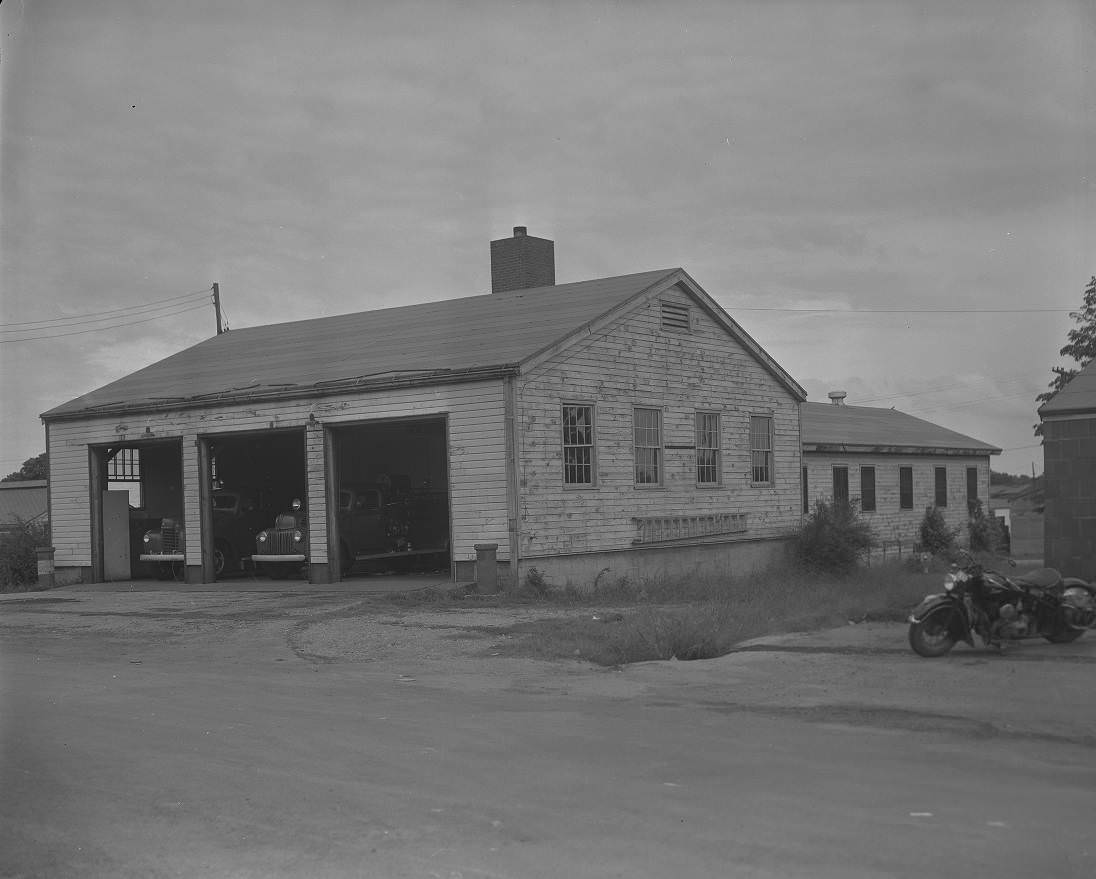
Nashville's airport officially opened in 1937 as Berry Field, in honor of Colonel Harry S. Berry, the state administrator of the Works Progress Administrator, or WPA. Berry Field became the military base for the 4th Ferrying Command during World War II and was returned to the city when the war ended.
The airport’s name was officially changed to Nashville International Airport in 1988, but the original three-letters BNA, which stands for Berry Field Nashville, remains.
#32 Berry Field garage storage building, 1950
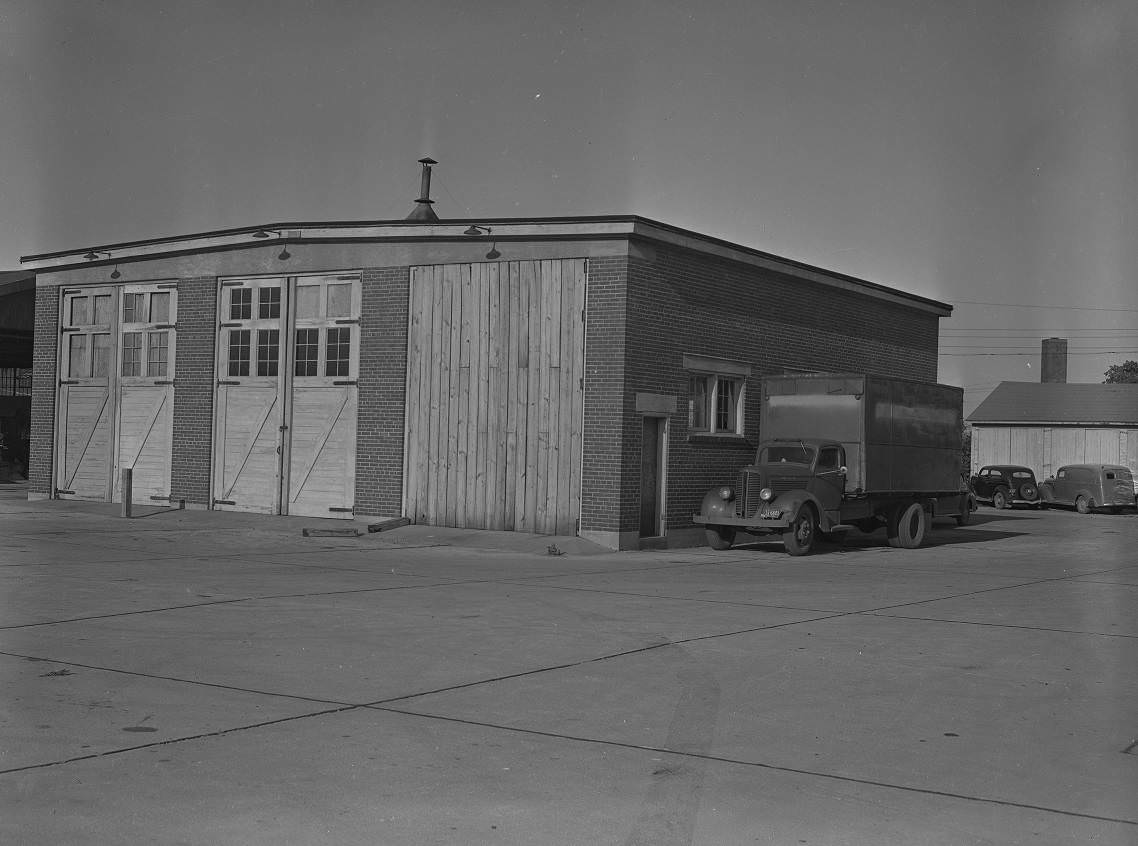
Nashville's airport officially opened in 1937 as Berry Field, in honor of Colonel Harry S. Berry, the state administrator of the Works Progress Administrator, or WPA. Berry Field became the military base for the 4th Ferrying Command during World War II and was returned to the city when the war ended.
The airport’s name was officially changed to Nashville International Airport in 1988, but the original three-letters BNA, which stands for Berry Field Nashville, remains.
#33 Capitol Airways hangar at Berry Field, Nashville, Tennessee, 1950
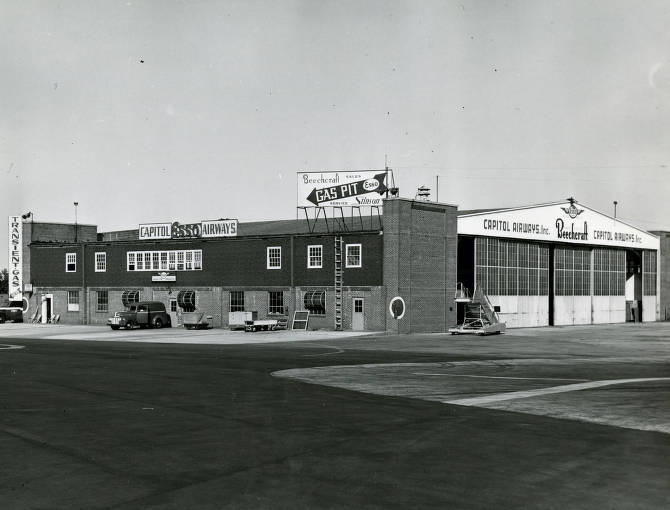
Named in honor of Colonel Harry S. Berry, state administrator of the WPA, Berry Field consisted of a terminal building, two hangars, a 4,000-foot concrete runway and a flashing beacon. The three-letter identifier, BNA, stands for Berry Field Nashville. American and Eastern airlines were the first air carriers to serve Nashville, and within the year, 189,000 passengers had used the facilities.
During World War II, Berry Field became the military base for the 4th Ferrying Command, and the federal government added additional acreage for its military operations. In 1946, after the war ended, the military returned a 1,500-acre airport site to the city.
#34 Capitol Airways hangar at Berry Field, Nashville, Tennessee, 1950
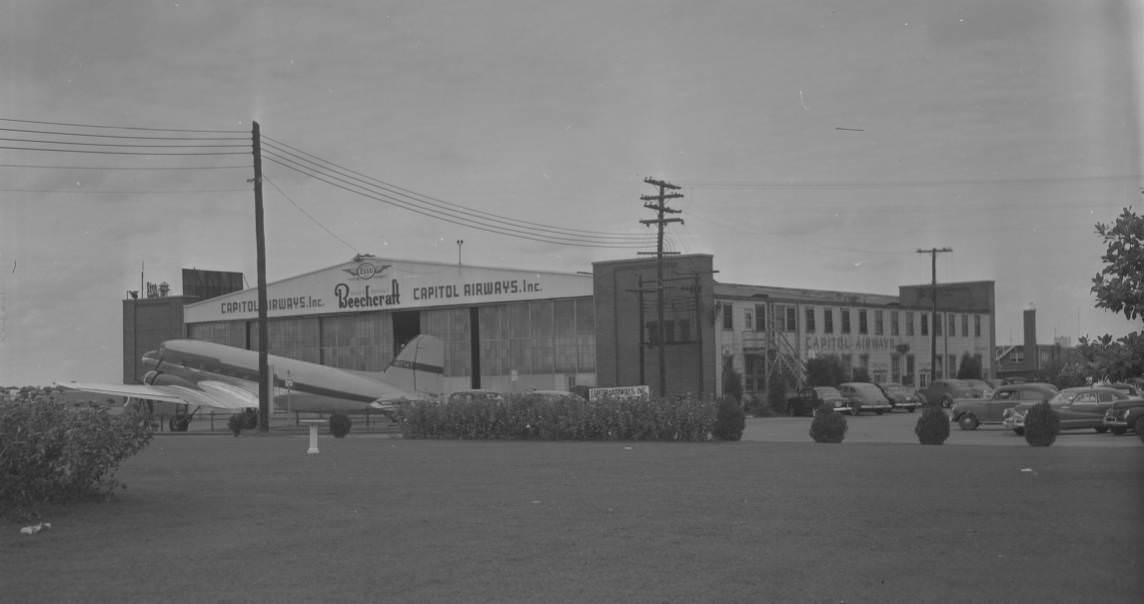
Capitol Airways was founded in 1946 and ended operations in 1982; they were also known as Capitol International Airways. Named in honor of Colonel Harry S. Berry, state administrator of the WPA, Berry Field consisted of a terminal building, two hangars, a 4,000-foot concrete runway and a flashing beacon.
The three letter identifier, BNA, stands for Berry Field Nashville. American and Eastern airlines were the first air carriers to serve Nashville, and within the year, 189,000 passengers had used the facilities.
During World War II, Berry Field became the military base for the 4th Ferrying Command, and the federal government added additional acreage for its military operations. In 1946, after the war ended, the military returned a 1,500-acre airport site to the city.
#35 Checkerboard hangar at Berry Field, Nashville, Tennessee, 1950
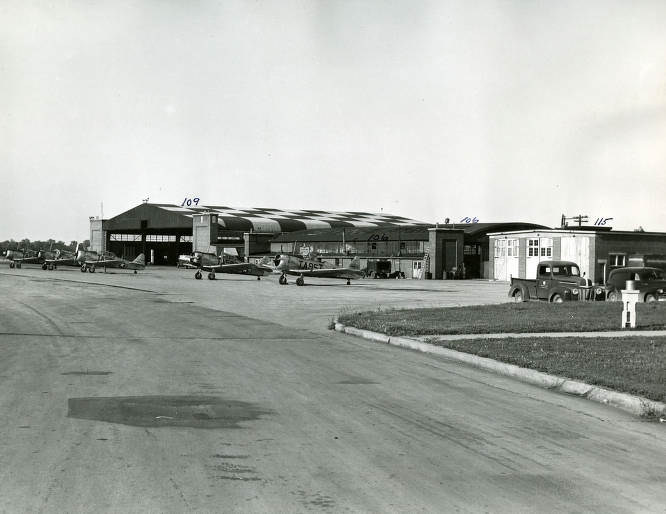
Named in honor of Colonel Harry S. Berry, state administrator of the WPA, Berry Field consisted of a terminal building, two hangars, a 4,000-foot concrete runway and a flashing beacon. The three letter identifier, BNA, stands for Berry Field Nashville. American and Eastern airlines were the first air carriers to serve Nashville, and within the year, 189,000 passengers had used the facilities.
During World War II, Berry Field became the military base for the 4th Ferrying Command, and the federal government added additional acreage for its military operations. In 1946, after the war ended, the military returned a 1,500-acre airport site to the city.
#36 Checkerboard hangar at Berry Field, Nashville, Tennessee, 1950
#37 City and State Administration Building, Department of Aviation, Berry Field, Nashville, Tennessee, 1950
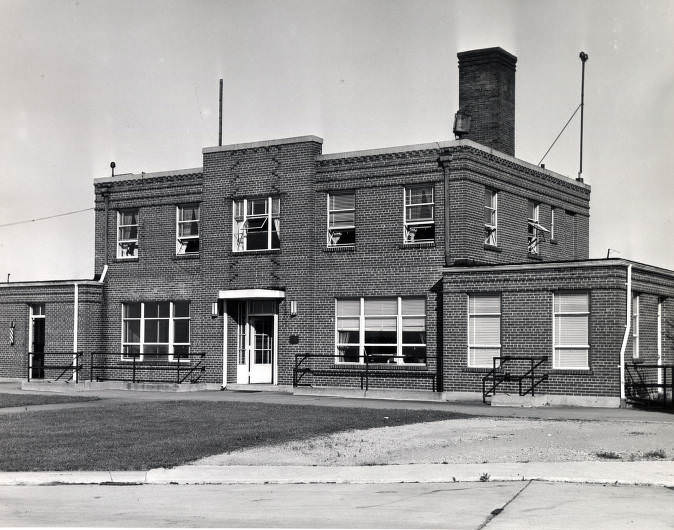
Named in honor of Colonel Harry S. Berry, state administrator of the WPA, Berry Field consisted of a terminal building, two hangars, a 4,000-foot concrete runway and a flashing beacon. The three letter identifier, BNA, stands for Berry Field Nashville. American and Eastern airlines were the first air carriers to serve Nashville, and within the year, 189,000 passengers had used the facilities.
During World War II, Berry Field became the military base for the 4th Ferrying Command, and the federal government added additional acreage for its military operations. In 1946, after the war ended, the military returned a 1,500-acre airport site to the city.
#38 Civil Aeronautics Authority (CAA) Weather Bureau, Berry Field, Nashville, Tennessee, 1950
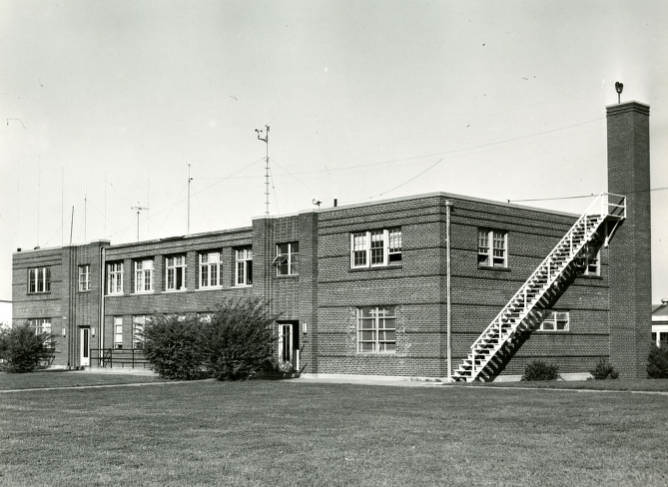
Named in honor of Colonel Harry S. Berry, state administrator of the WPA, Berry Field consisted of a terminal building, two hangars, a 4,000-foot concrete runway and a flashing beacon. The three-letter identifier, BNA, stands for Berry Field Nashville. American and Eastern airlines were the first air carriers to serve Nashville, and within the year, 189,000 passengers had used the facilities.
During World War II, Berry Field became the military base for the 4th Ferrying Command, and the federal government added additional acreage for its military operations. In 1946, after the war ended, the military returned a 1,500-acre airport site to the city.
#39 Civil Aviation Authority Localizer House, Berry Field, Nashville, Tennessee, 1950
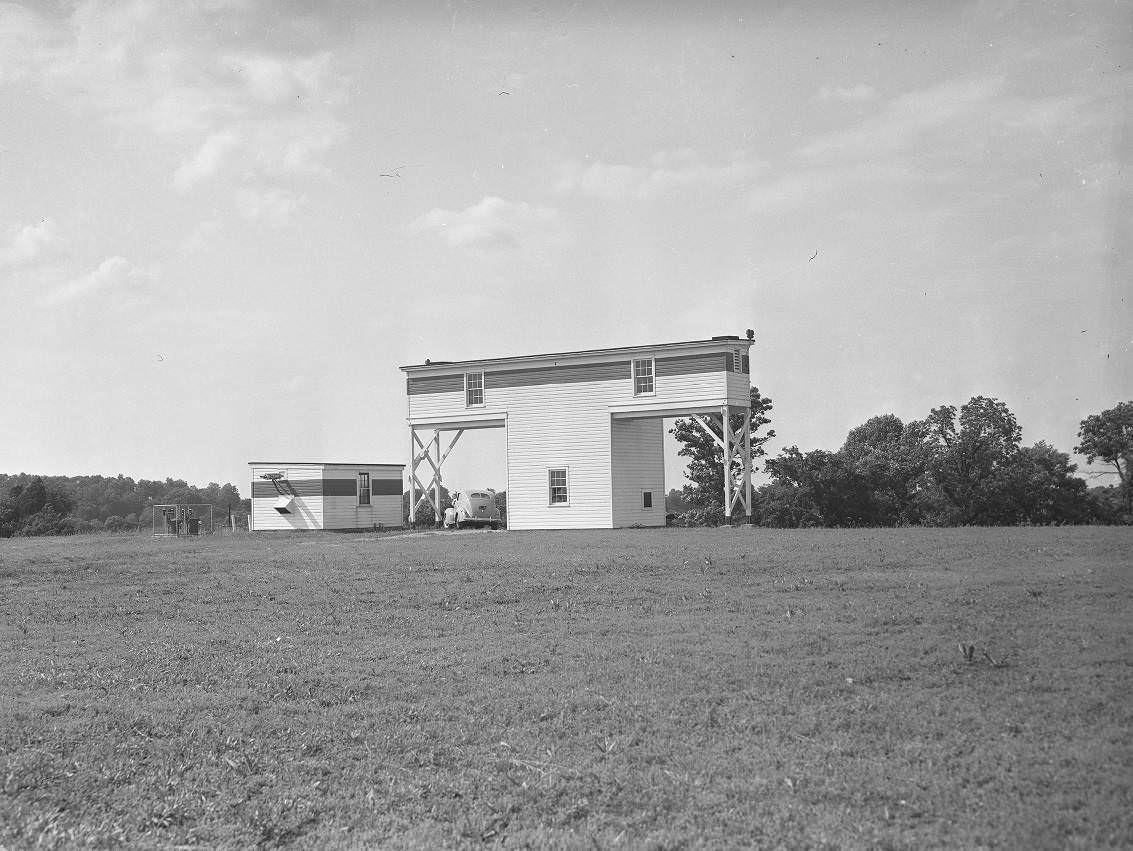
Nashville's airport officially opened in 1937 as Berry Field, in honor of Colonel Harry S. Berry, the state administrator of the Works Progress Administrator, or WPA. Berry Field became the military base for the 4th Ferrying Command during World War II and was returned to the city when the war ended.
The airport’s name was officially changed to Nashville International Airport in 1988, but the original three-letters BNA, which stands for Berry Field Nashville, remains.
#40 Dedication of the Sewart Air Force Base, 1950
#41 Dedication of the Sewart Air Force Base, 1950
#42 Air National Guard hangar at Berry Field, Nashville, Tennessee, 1950
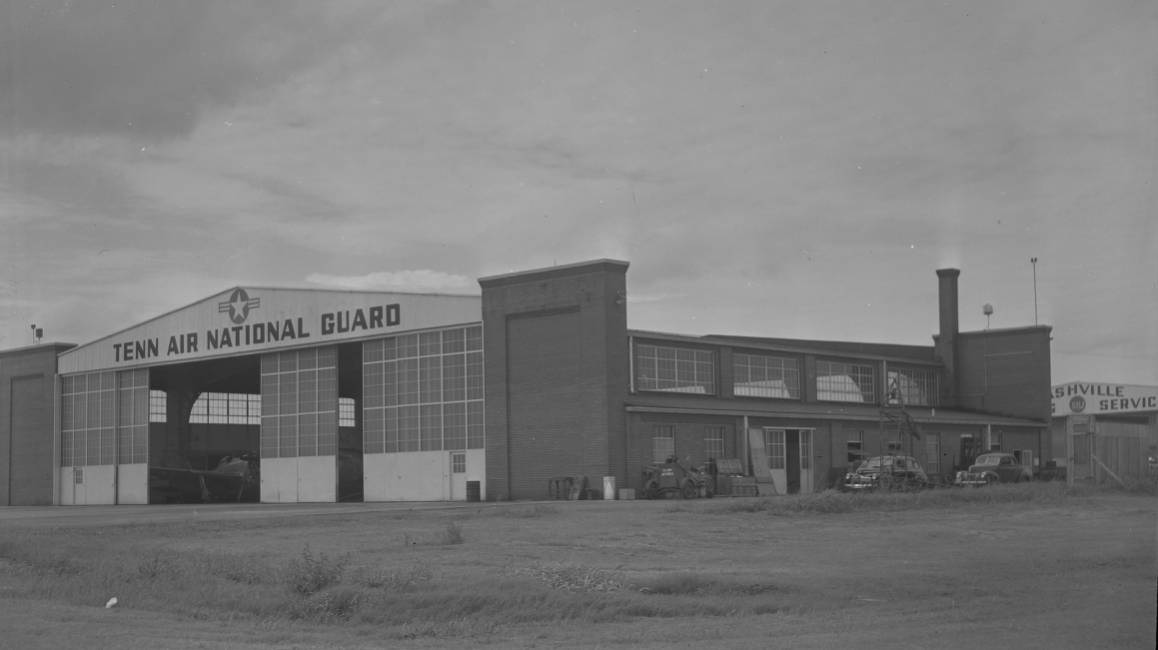
Named in honor of Colonel Harry S. Berry, state administrator of the WPA, Berry Field consisted of a terminal building, two hangars, a 4,000-foot concrete runway and a flashing beacon. The three letter identifier, BNA, stands for Berry Field Nashville. American and Eastern airlines were the first air carriers to serve Nashville, and within the year, 189,000 passengers had used the facilities.
During World War II, Berry Field became the military base for the 4th Ferrying Command, and the federal government added additional acreage for its military operations. In 1946, after the war ended, the military returned a 1,500-acre airport site to the city.
#43 Fire Department, Department of Aviation, Berry Field, Nashville, Tennessee, 1950
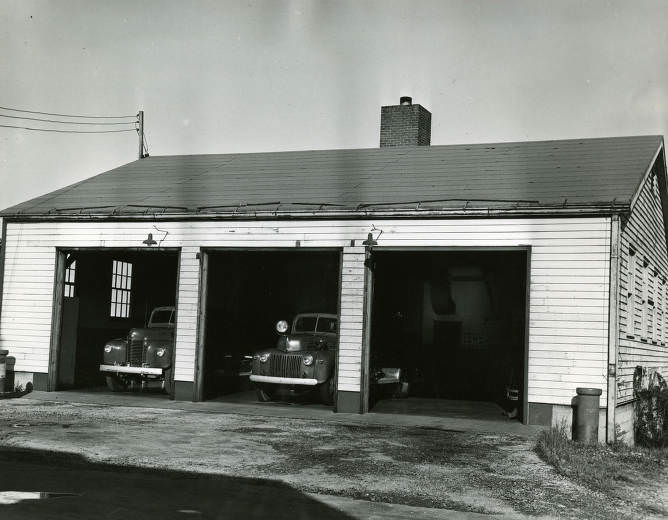
Named in honor of Colonel Harry S. Berry, state administrator of the WPA, Berry Field consisted of a terminal building, two hangars, a 4,000-foot concrete runway and a flashing beacon. The three-letter identifier, BNA, stands for Berry Field Nashville. American and Eastern airlines were the first air carriers to serve Nashville, and within the year, 189,000 passengers had used the facilities.
During World War II, Berry Field became the military base for the 4th Ferrying Command, and the federal government added additional acreage for its military operations. In 1946, after the war ended, the military returned a 1,500-acre airport site to the city.
#44 Garage storage building, Department of Aviation, Berry Field, Nashville, Tennessee, 1950
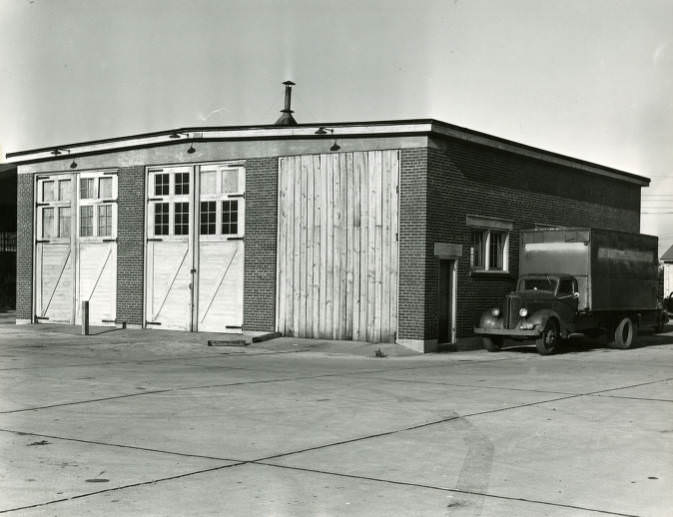
Named in honor of Colonel Harry S. Berry, state administrator of the WPA, Berry Field consisted of a terminal building, two hangars, a 4,000-foot concrete runway and a flashing beacon. The three-letter identifier, BNA, stands for Berry Field Nashville. American and Eastern airlines were the first air carriers to serve Nashville, and within the year, 189,000 passengers had used the facilities.
During World War II, Berry Field became the military base for the 4th Ferrying Command, and the federal government added additional acreage for its military operations. In 1946, after the war ended, the military returned a 1,500-acre airport site to the city.
#45 Nashville Flying Service at Berry Field, Nashville, Tennessee, 1950
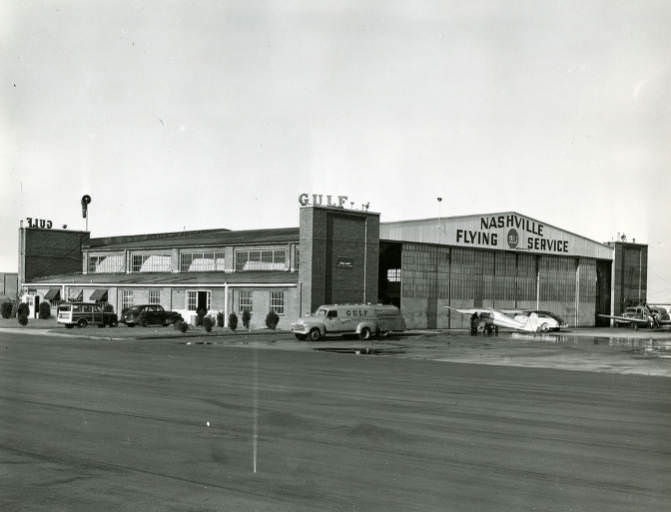
Named in honor of Colonel Harry S. Berry, state administrator of the WPA, Berry Field consisted of a terminal building, two hangars, a 4,000-foot concrete runway and a flashing beacon. The three letter identifier, BNA, stands for Berry Field Nashville. American and Eastern airlines were the first air carriers to serve Nashville, and within the year, 189,000 passengers had used the facilities.
During World War II, Berry Field became the military base for the 4th Ferrying Command, and the federal government added additional acreage for its military operations. In 1946, after the war ended, the military returned a 1,500-acre airport site to the city.
#46 Nashville Flying Service hangar at Berry Field, Nashville, Tennessee, 1950
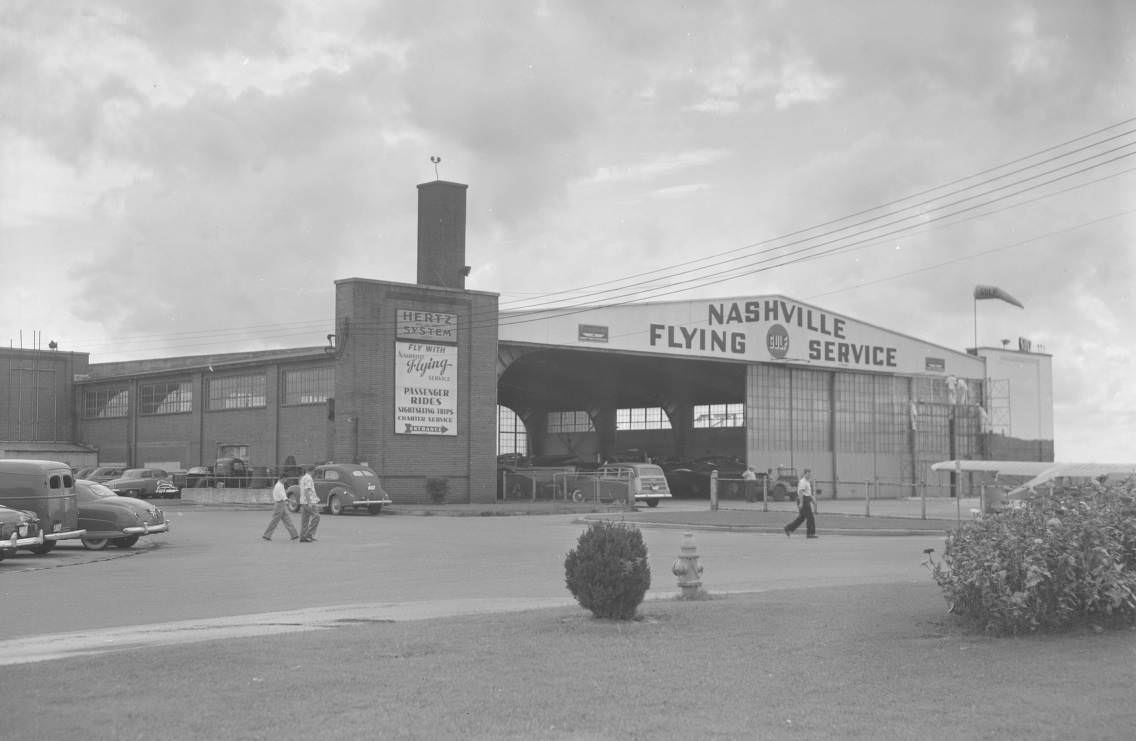
The sign on the building reads: “Fly with Nashville Flying Service, Passenger Rides, Sightseeing Trips, Charter Service.” Named in honor of Colonel Harry S. Berry, state administrator of the WPA, Berry Field consisted of a terminal building, two hangars, a 4,000-foot concrete runway and a flashing beacon.
The three letter identifier, BNA, stands for Berry Field Nashville. American and Eastern airlines were the first air carriers to serve Nashville, and within the year, 189,000 passengers had used the facilities.
During World War II, Berry Field became the military base for the 4th Ferrying Command, and the federal government added additional acreage for its military operations. In 1946, after the war ended, the military returned a 1,500-acre airport site to the city.
#47 Nashville Municipal Airport City-State Administration Building, 1950
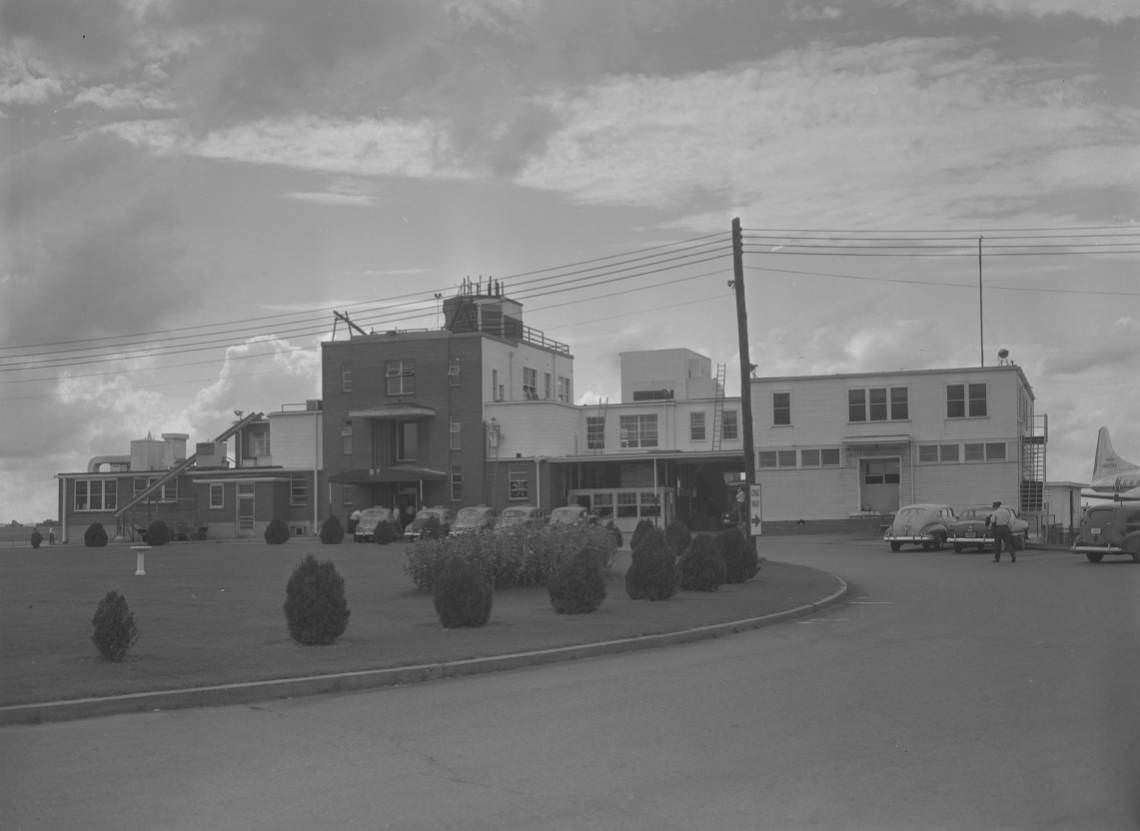
Nashville's airport officially opened in 1937 as Berry Field, in honor of Colonel Harry S. Berry, the state administrator of the Works Progress Administrator, or WPA. Berry Field became the military base for the 4th Ferrying Command during World War II and was returned to the city when the war ended.
The airport’s name was officially changed to Nashville International Airport in 1988, but the original three-letters BNA, which stands for Berry Field Nashville, remains.
#48 Non-Commissioned Officer’s Club, Nashville Airport, 1950
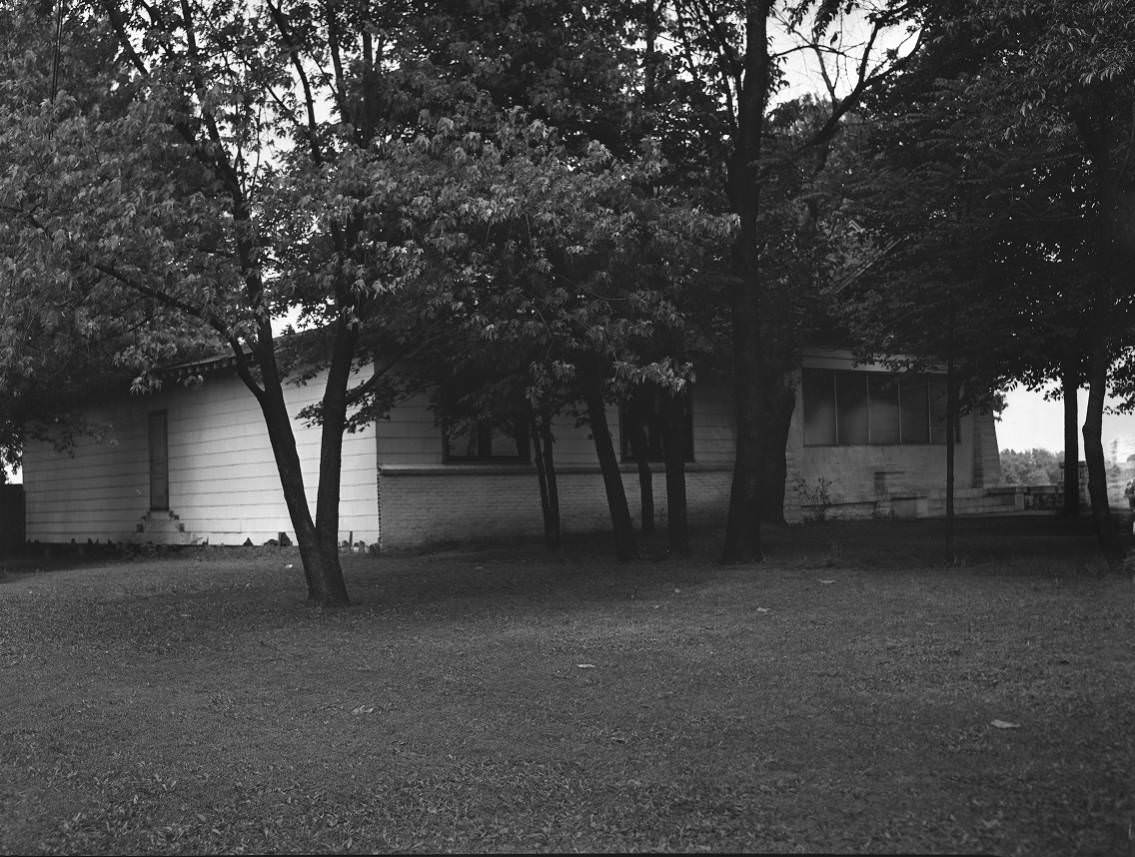
This building was probably one of the 105 WWII-era buildings built by the Army at Nashville’s Berry Field. Nashville's airport officially opened in 1937 as Berry Field, in honor of Colonel Harry S. Berry, the state administrator of the Works Progress Administrator, or WPA. Berry Field became the military base for the 4th Ferrying Command during World War II and was returned to the city when the war ended.
The airport’s name was officially changed to Nashville International Airport in 1988, but the original three-letters BNA, which stands for Berry Field Nashville, remains.
#49 Water Department and the George Reyer Pumping Station, Nashville, Tennessee, 1950
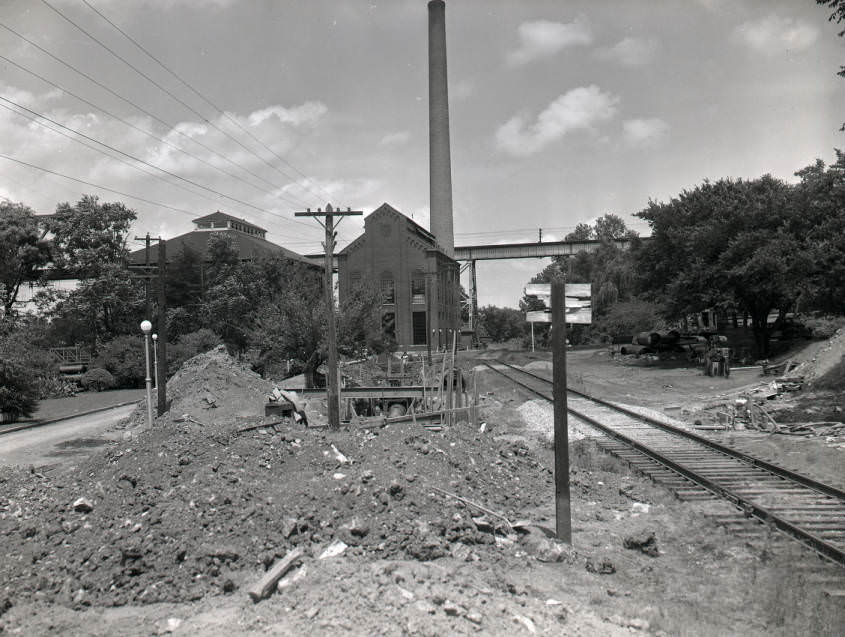
The George Reyer Pumping Station (located on Omohundro Drive) and the Eighth Avenue Reservoir were built in 1889. Both the pumping station, powered by steam until 1953, and the Eighth Avenue Reservoir are still in operation today and are included in the National Registry of Historical Places. A water filtration plant was completed at Omohundro Drive in 1929. The K.R. Harrington Water Treatment Plant, located on Heartland Drive in Donelson, joined the Omohundro Treatment Plant in supplying safe, clean water to the Nashville area in 1978.
The George Reyer Pumping Station was named in honor of Captain George Reyer, a Water Works superintendent for over 41 years.
#50 Water Department and the George Reyer Pumping Station, Nashville, Tennessee, 1950
#51 Water Department and the George Reyer Pumping Station, Nashville, Tennessee, 1950
#52 Wharton Elementary School, Nashville, Tennessee, 1950
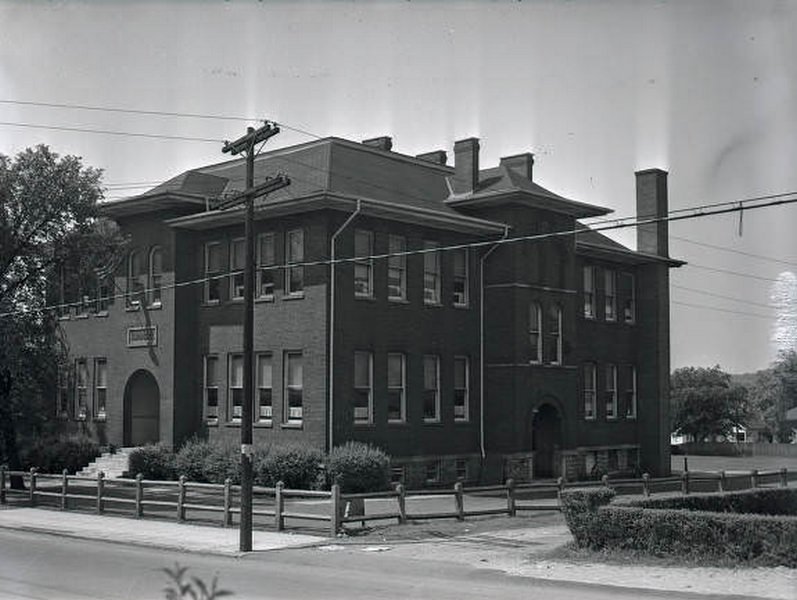
The school was named for Arthur Dickson Wharton (1840-1900), scholar, Confederate naval hero, and educator. The school building was located at 1515 18th Avenue N in North Nashville. In 1959 a new school facility was built a block away, to accommodate 800 students in grades 1-9, replacing the original structure which had housed grades 1-4. The enrollment would further increase, with building expansion.
The original building was later demolished.
#53 Kayne Avenue Baptist Church, 1950
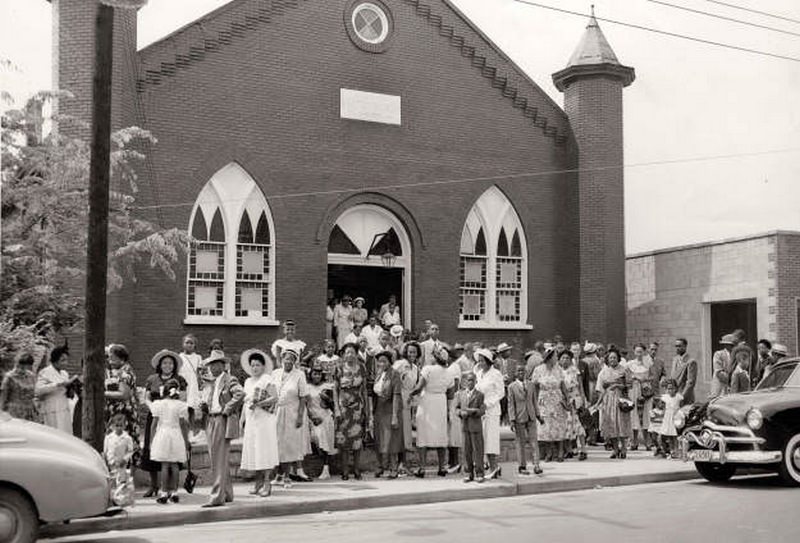
This African American church was located on Twelfth Avenue South, across from the Carter-Lawrence School. When the building burned down it was replaced by a new church further down Twelfth Avenue South.
Some people identified in the photograph include Adeline Black, her sisters Hannah Black Teague and Geneva Black Midgett Blakemore, Edna Earle Hebb, Carrie Timberlake Jones Hoggett, Ewell Cotton, Jenny Robertson, and Mary Cotton Overton.
#54 Ted Mack arrives at Berry Field and receives key to the City, Nashville, Tennessee, 1950
#55 Tennessee National Guard, 1950
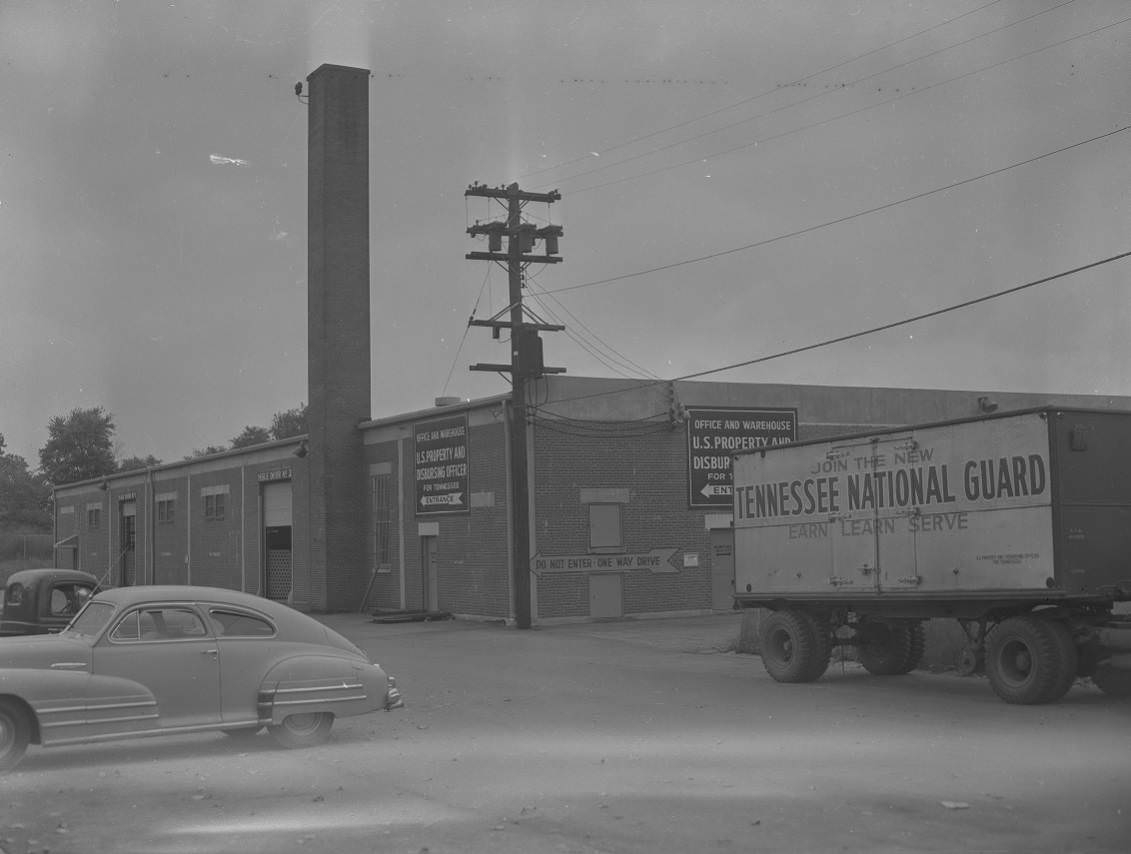
The National Guard continued to be based at the Nashville Airport after World War II, the Tennessee National Guard’s 105th Observation Squadron, which flew missions including reconnaissance and fighter-interceptor operations during the 1930s and 1940s, continued these operations during the 1950s. In 1961, the 105th became the flying squadron of the 118th Air Transport Wing.
Nashville's airport officially opened in 1937 as Berry Field, in honor of Colonel Harry S. Berry, the state administrator of the Works Progress Administrator, or WPA. Berry Field became the military base for the 4th Ferrying Command during World War II and was returned to the city when the war ended.
#56 The Terminal Building, Department of Aviation, Berry Field, Nashville, Tennessee, 1950
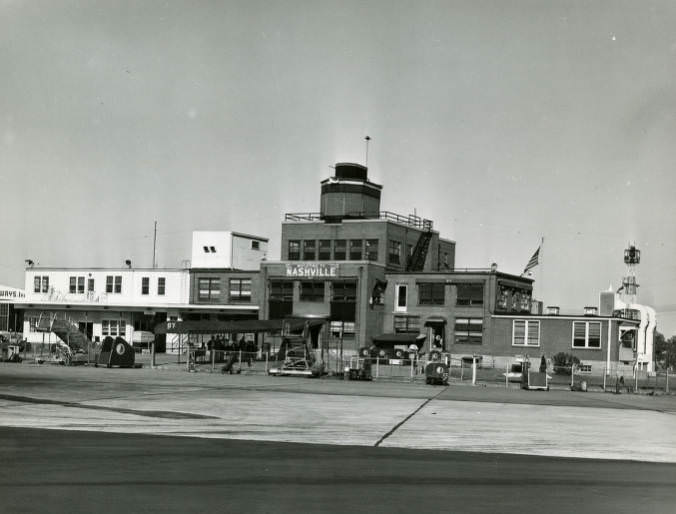
Named in honor of Colonel Harry S. Berry, state administrator of the WPA, Berry Field consisted of a terminal building, two hangars, a 4,000-foot concrete runway and a flashing beacon. The three-letter identifier, BNA, stands for Berry Field Nashville. American and Eastern airlines were the first air carriers to serve Nashville, and within the year, 189,000 passengers had used the facilities.
During World War II, Berry Field became the military base for the 4th Ferrying Command, and the federal government added additional acreage for its military operations. In 1946, after the war ended, the military returned a 1,500-acre airport site to the city.
#57 U.S. Air Force hangar, training center, at Berry Field, Nashville, Tennessee, 1950
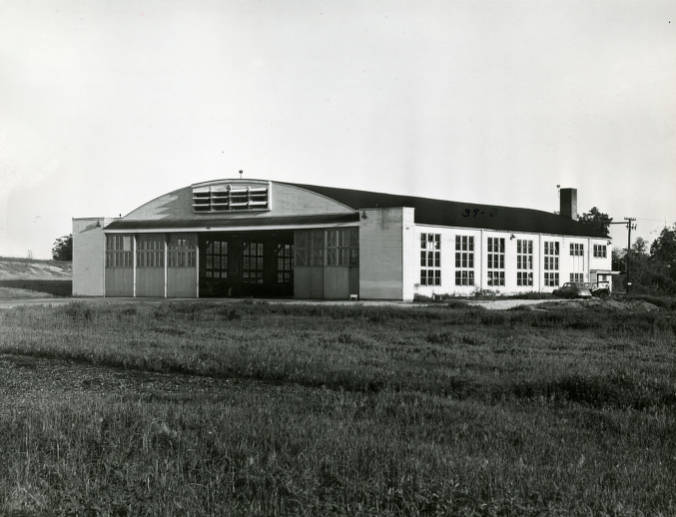
Named in honor of Colonel Harry S. Berry, state administrator of the WPA, Berry Field consisted of a terminal building, two hangars, a 4,000-foot concrete runway and a flashing beacon. The three letter identifier, BNA, stands for Berry Field Nashville. American and Eastern airlines were the first air carriers to serve Nashville, and within the year, 189,000 passengers had used the facilities.
During World War II, Berry Field became the military base for the 4th Ferrying Command, and the federal government added additional acreage for its military operations. In 1946, after the war ended, the military returned a 1,500-acre airport site to the city.
#58 U.S.A.F. hangar at Berry Field, Nashville, Tennessee, 1950
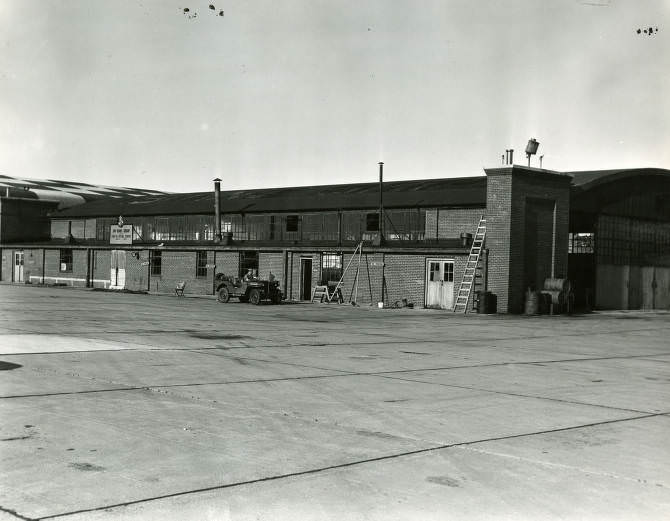
Named in honor of Colonel Harry S. Berry, state administrator of the WPA, Berry Field consisted of a terminal building, two hangars, a 4,000-foot concrete runway and a flashing beacon. The three letter identifier, BNA, stands for Berry Field Nashville. American and Eastern airlines were the first air carriers to serve Nashville, and within the year, 189,000 passengers had used the facilities.
During World War II, Berry Field became the military base for the 4th Ferrying Command, and the federal government added additional acreage for its military operations. In 1946, after the war ended, the military returned a 1,500-acre airport site to the city.


